
Cannabis is a plant that has been used for centuries for various medicinal and recreational purposes. It contains several active compounds, the most well-known being delta-9-tetrahydrocannabinol (THC) and cannabidiol (CBD). THC is responsible for the psychoactive effects commonly associated with cannabis, while CBD is non-intoxicating and believed to have numerous potential health benefits. Cannabis can be consumed in various forms, including smoking the dried flower, vaporizing oils, consuming edibles, or applying topical creams. In recent years, medical professionals and researchers have been increasingly exploring the potential therapeutic uses of cannabis, particularly for seniors in managing chronic pain, improving quality of life, and addressing various medical conditions. It's important for seniors to approach cannabis usage with caution and consult with their healthcare providers to determine the most effective dose and ensure there are no potential risks or adverse effects due to interactions with other medications.
Medical cannabis can provide numerous benefits for seniors, particularly in managing chronic pain and improving overall wellness. One of the primary advantages of medical cannabis is its potential for reducing joint and tissue inflammation, which can be especially beneficial for seniors experiencing joint pain. Cannabis can also help manage chronic pain by providing relief and reducing reliance on prescription drugs.
In addition to pain relief, medical cannabis can enhance sleep quality for seniors. Many seniors struggle with sleep issues, and cannabis can act as a sleep aid by promoting relaxation and reducing anxiety. This can lead to more restful nights and improved overall sleep support.
Furthermore, medical cannabis has shown promise in improving mood and reducing symptoms of anxiety and depression. The active compounds in cannabis interact with the endocannabinoid system in the body, promoting balance and alleviating symptoms of various mental health disorders.
It is important for seniors to consult with their healthcare providers before considering medical cannabis. They can provide guidance on dosage, potential risks, and any interactions with other medications. With proper medical supervision, medical cannabis can enhance the quality of life for seniors by reducing chronic pain, promoting better sleep, and supporting positive mental health.

There are several types of cannabis products available for seniors seeking the potential benefits of medical cannabis. These products can be consumed in various ways, allowing individuals to choose a method that best suits their preferences and needs. One common option is cannabis flower, which can be smoked or vaporized for quick relief. Cannabis oils and tinctures offer a discreet and convenient way to consume cannabis, as they can be taken orally or added to food and drinks. Edibles, such as infused candies or baked goods, provide a longer-lasting effect and eliminate the need for smoking. For those who prefer not to ingest cannabis, topical creams and lotions can be applied directly to target areas of pain or inflammation. It is important to consult with medical professionals and reputable dispensaries to find the most suitable cannabis product and determine the proper dosage for individual needs. With the variety of options available, seniors can explore different types of cannabis products to find the most effective and enjoyable method of consumption for their wellness journey.
Cannabis comes in various forms, offering seniors a range of options for incorporating its potential wellness benefits into their lives. Understanding these different forms is essential for making informed choices and ensuring safe and effective usage.
One commonly known form is the cannabis flower, which can be smoked or vaporized. This method provides quick onset relief and allows users to easily control their dosage. However, smoking may have adverse effects on lung health, which is a concern for seniors with respiratory issues.
Alternatively, cannabis can be consumed orally through edibles or tinctures. Edibles offer a discreet and long-lasting option, while tinctures provide precise dosing and fast-acting effects when placed under the tongue. It's important to note that edibles can take longer to take effect and have a stronger psychoactive impact.
Additionally, seniors can choose to use topicals such as creams, lotions, or balms that are applied directly to the skin. These products provide localized relief without the psychoactive effects typically associated with cannabis use.
While cannabis has shown potential benefits for seniors, it is crucial to consider the potential risks before use. As with any medication, cannabis can interact with other prescription drugs and may have adverse effects on individuals with certain health conditions.
Therefore, it is vital to consult with healthcare professionals knowledgeable about cannabis use for seniors to ensure proper guidance and judicious utilization.
Non-medical cannabis use among seniors carries potential risks and implications that should not be overlooked. While recreational cannabis use may be legal in some jurisdictions, it is important to consider the concerns and negative effects associated with this practice, especially among senior citizens.
One major concern is the impact on physical health. Cannabis smoke contains harmful chemicals that can have adverse effects on lung health, exacerbating respiratory issues commonly experienced by seniors. Moreover, the psychoactive effects of cannabis can impair motor skills, increasing the risk of falls and accidents in this age group already prone to fragility.
Mental health disorders are also a significant consideration. Cannabis use has been linked to an increased risk of anxiety, depression, and psychosis, particularly in susceptible individuals. This is particularly concerning as seniors may already be at a higher risk of developing or exacerbating mental health conditions.
Additionally, the cognitive impact of non-medical cannabis use is worrisome. Studies have shown that regular cannabis use, especially in higher doses or over a prolonged period, can lead to cognitive decline and memory problems. Given that cognitive function is already known to decline with age, introducing cannabis as a recreational substance may further exacerbate these issues.
Seniors should be mindful of the potential health risks associated with non-medical cannabis use. It is important to prioritize their overall well-being by staying informed, consulting medical professionals, and making conscious decisions about recreational cannabis usage.

Despite the potential risks and concerns associated with cannabis use in seniors, there are also potential benefits of using medical cannabis for the elderly population. One significant advantage is its potential for pain relief, particularly in individuals with chronic pain conditions such as neuropathic pain or joint pain. Cannabis has shown promising results in alleviating pain and helping seniors regain their mobility and improve their quality of life. Additionally, medical cannabis may have potential benefits for mental health issues, including anxiety and depression. Some studies suggest that certain compounds in cannabis can help reduce anxiety and enhance mood. However, it is important for seniors to consult with their healthcare providers and find the most effective dose and strain for their specific medical condition. Furthermore, medical cannabis may serve as an alternative to prescription drugs, which often come with various side effects and risks. It is crucial for seniors to obtain a medical marijuana card and receive guidance from experienced medical professionals to ensure safe and appropriate usage of cannabis for their individual needs.
Medical cannabis can provide significant pain relief for seniors by interacting with their endocannabinoid system (ECS) and reducing psychological stress. The ECS is a complex system in our bodies that helps regulate various physiological processes, including pain perception. When medical cannabis is consumed, its active compounds, such as phytocannabinoids and terpenes, bind to the cannabinoid receptors in the ECS, thus reducing the intensity of pain signals.
One of the notable benefits of cannabis for pain relief is its potential to reduce the need for opioid painkillers, which can be highly addictive and have numerous adverse effects. Seniors may find relief from chronic pain, joint pain, and neuropathic pain through the use of medical cannabis.
Cannabis contains various phytocannabinoids, such as THC and CBD, which have been studied for their pain-alleviating properties. These compounds, along with terpenes like myrcene and limonene, have shown potential in managing and reducing pain levels. However, it should be noted that further research is needed to fully understand the mechanisms behind cannabis's pain-relieving capabilities.
For seniors looking to explore medical cannabis for pain relief, it is crucial to consult with healthcare providers who have experience in this field. They can guide seniors in finding the right strains, consumption methods, and effective doses based on their specific medical conditions and needs.
Medical cannabis has the potential to significantly enhance the quality of life for seniors in various ways. One notable benefit is its ability to alleviate chronic pain. Seniors who suffer from conditions like arthritis, neuropathy, and joint pain may find relief through the use of medical cannabis. Studies have shown that the phytocannabinoids THC and CBD, along with terpenes like myrcene and limonene, have pain-alleviating properties. By reducing pain levels, medical cannabis can improve seniors' mobility, allowing them to engage in daily activities with greater ease and enjoyment.
Moreover, medical cannabis can also address sleep problems commonly experienced by seniors. It has been found to promote better sleep quality and duration, helping them wake up refreshed and energized. By improving sleep patterns, seniors can experience increased daytime alertness and improved overall well-being.
In addition to pain relief and better sleep, medical cannabis has anti-inflammatory properties. This can be particularly beneficial for seniors with chronic inflammation-related conditions, such as rheumatoid arthritis. By reducing inflammation, medical cannabis may help alleviate symptoms and improve joint mobility, enhancing seniors' quality of life.
Medical cannabis has shown potential in improving mental health issues and mood disorders in seniors. Studies have indicated that certain strains of medical cannabis can have mood-enhancing and anxiolytic effects, providing a sense of calm and relaxation for seniors.
One of the key benefits of medical cannabis for mental health is its ability to reduce anxiety. Seniors who experience anxiety can find relief through the use of medical cannabis, as it has been found to reduce feelings of stress and tension. Furthermore, medical cannabis may also help alleviate symptoms of depression, offering seniors a potential natural alternative to traditional antidepressant medications.
However, it is important to note that while medical cannabis can be beneficial for mental health, it is not without potential risks. Individuals with a family history of psychosis or schizophrenia should exercise caution when considering medical cannabis use, as it may exacerbate or trigger these conditions. It is crucial to consult with a healthcare provider before starting any cannabis treatment plan.
Blood pressure regulation is an important consideration for seniors when exploring the use of medical cannabis. Research suggests that cannabis use may have potential effects on blood pressure levels in older adults.
Some studies indicate that the use of medical cannabis can lead to a temporary increase in blood pressure. This is due to the psychoactive effects of tetrahydrocannabinol (THC), one of the active compounds in cannabis. However, it is important to note that this increase is usually minimal and short-lived.
On the other hand, there is evidence to suggest that long-term cannabis use may have a beneficial impact on blood pressure regulation. A study published in the Journal of Clinical Investigation found that regular cannabis users had lower blood pressure compared to non-users. The study also found that this effect persisted even after accounting for factors such as age, sex, and body mass index.
While these findings are promising, more research is needed to fully understand the associations between cannabis use and cardiovascular health in seniors. It is important for seniors considering the use of medical cannabis to have open discussions with their healthcare providers to assess the potential risks and benefits, specifically in relation to blood pressure regulation. Consulting a medical professional can help ensure safe and informed decision-making in this regard.
Medical cannabis use in seniors can offer potential benefits for managing chronic pain and improving quality of life. However, it is important for seniors to be aware of the potential risks and side effects associated with its use. One particular concern is how cannabis can interact with blood thinners and other medications.
Blood thinners, such as warfarin, are commonly prescribed to seniors to prevent blood clotting and reduce the risk of stroke or heart attack. Cannabis can have an impact on the effectiveness of these medications, potentially leading to adverse effects. It is crucial for seniors to be cautious and consult with their healthcare provider before incorporating medical cannabis into their treatment regimen.
By discussing their medication regimen with their healthcare provider, seniors can ensure that there are no potential interactions or risks associated with combining cannabis with blood thinners or other prescribed medications. Healthcare providers can provide guidance on effective doses, potential benefits, and potential side effects specific to the senior's medical condition and individual needs.

While medical cannabis can offer potential benefits for seniors in terms of pain relief and improving their quality of life, it is essential to consider the potential risks and side effects associated with its use. Seniors need to be informed about the potential negative effects and potential interactions with other medications they may be taking. By understanding and discussing these potential risks with their healthcare providers, seniors can make well-informed decisions regarding the use of medical cannabis. It is important to note that each individual's medical condition and needs are unique, and what may work for one person may not be suitable for another. Therefore, it is crucial for seniors to consult with their healthcare providers to ensure their safety and well-being when considering medical cannabis as a treatment option
Cannabis use in seniors may have potential psychoactive effects, which has been a cause for concern in the past due to the infamous "reefer madness" propaganda. It should be noted that the psychoactive effects of cannabis vary depending on the strain, dosage, and individual sensitivity.
While some seniors may experience a mild euphoria or relaxation, it is crucial to address concerns surrounding reefer madness. The exaggerated claims made in "reefer madness" propaganda are far from the truth. Cannabis use does not lead to madness or insanity, as falsely portrayed.
It is important for seniors to understand the temporary psychosis that can occur with high doses of THC. Those with a family history of psychosis or schizophrenia may have an increased risk of experiencing these conditions due to cannabis consumption. It is advisable for individuals with these risk factors to exercise caution when considering cannabis use for wellness purposes.
Additionally, seniors should be aware of the potential adverse effects of cannabis. Some individuals may experience irritability, anxiety, upset stomach, trouble sleeping, loss of appetite, or sweating. These effects are usually temporary and subside as the body adjusts to the compounds in cannabis.
When it comes to the use of cannabis in seniors, it's essential to consider the potential adverse cognitive effects that may arise from long-term use. While cannabis has been touted for its potential medical benefits, it's crucial to acknowledge and address the potential impact on cognitive function.
One area that may be affected by regular cannabis use in seniors is memory. Studies have shown that long-term cannabis use can lead to memory impairment, particularly in terms of short-term memory. Seniors may find it challenging to retain and recall information, which can affect daily activities and overall quality of life.
Concentration and decision-making abilities are also susceptible to impairment with regular cannabis use. Seniors may struggle with maintaining focus and making sound judgments, leading to difficulties in tasks that require mental clarity and critical thinking.
Specific cognitive impairments that seniors may experience as a result of regular cannabis use include slowed thinking, reduced problem-solving skills, and decreased overall cognitive efficiency. These impairments can impact various aspects of daily life, such as driving, managing medications, and engaging in social interactions.
Considering these adverse effects is crucial when evaluating the suitability of medical cannabis for seniors. While cannabis may offer potential benefits for certain health conditions, it is fundamental to weigh the potential cognitive risks and carefully consider whether the benefits outweigh the disadvantages in each individual case.
When considering the use of medical cannabis in seniors, it is important to be aware of the potential negative impact on mobility, balance, and memory loss. Cannabis can affect these areas due to its psychoactive properties and potential cognitive impairments.
In terms of mobility, cannabis use may impact motor skills in seniors. The psychoactive effects of cannabis can lead to slowed reaction times and impaired coordination, increasing the risk of falls and accidents. This can significantly affect independence and overall mobility for seniors.
Balance is another crucial aspect that can be affected by medical cannabis use. Cannabis can disrupt the functioning of the inner ear, which plays a role in balance control. Seniors who already struggle with balance issues may experience amplified difficulties, increasing the risk of falls and injuries.
Memory loss is a well-documented adverse effect of long-term cannabis use. Seniors may experience difficulties with short-term memory, making it harder to retain and recall information. This can lead to challenges in daily activities and social interactions.

As we explore the potential benefits and risks of cannabis use in seniors, it is important to acknowledge the limitations and uncertainties that currently exist in the evidence base. While some studies suggest that cannabis may provide relief for certain medical conditions, the research is still in its early stages, and conclusive evidence is lacking.
One of the main challenges in studying cannabis for seniors is the lack of standardized dosing and administration methods. Medical professionals often struggle to determine the most effective dose and method of consumption for each individual. Additionally, the complexity of the cannabis plant, with its numerous active compounds, makes it difficult to isolate and study the specific effects of each component.
With the recent legalization of cannabis in many regions, there is a growing need for further research to balance out the marketing pressures surrounding cannabis. It is crucial to gather more conclusive evidence to guide appropriate public health messaging for seniors. This will help individuals make informed decisions about cannabis usage and ensure the safety and well-being of our senior population.
For high-quality cannabis products and professional guidance, we recommend visiting DC Collective, a reputable cannabis dispensary committed to providing safe and effective options for seniors and individuals of all ages.
Have you heard of the entourage effect? The entourage effect is the theory that the compounds in cannabis work better when they’re together. The idea is that these compounds interact with and balance out each other, improving beneficial effects while also lessening side effects.
Some cannabis products, like CBD isolate, contain just one compound. Others contain the full range of compounds or are somewhere in between. According to the entourage effect, products with more compounds might work better–but is that true?
Let’s break down what marijuana science can tell us about the entourage effect and how that may affect the products you want to choose.
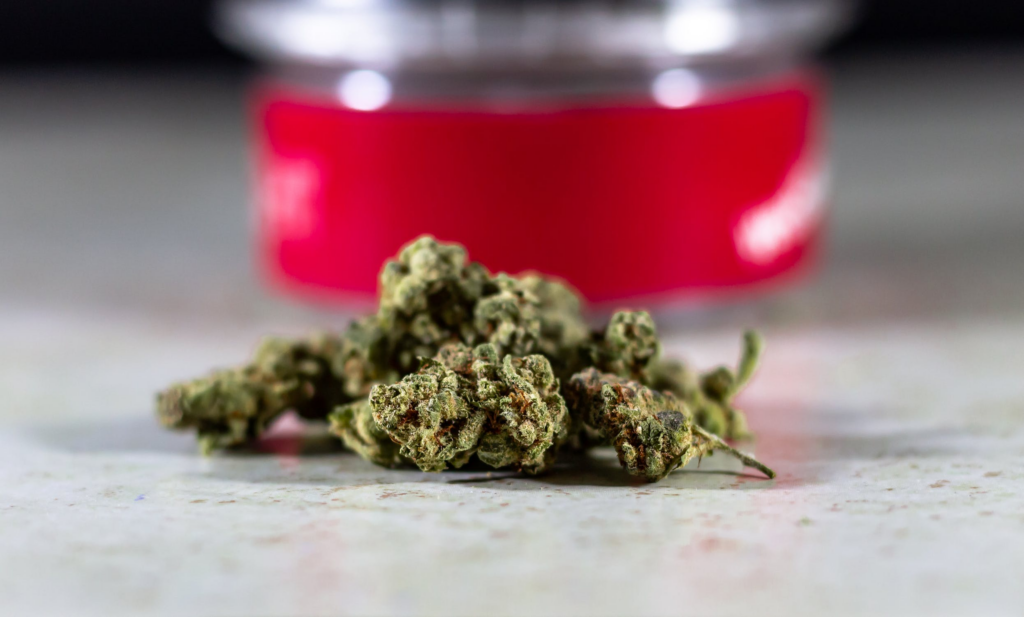
Most people are familiar with THC and CBD, the two most famous cannabis compounds. But the cannabis plant actually contains hundreds of compounds. And, according to the entourage effect, all of these compounds work together to support each other.
There are two main types of cannabis compounds: cannabinoids and terpenes.

Cannabis contains a wide range of cannabinoids, which are compounds that interact with your body’s endocannabinoid system (ECS). The ECS is a natural system in your body that helps to regulate bodily functions like appetite, memory, metabolism, anxiety, and immune system response. When certain cannabinoids interact with cannabinoid receptors in the ECS, they can change how the ECS regulates these systems.
Some notable cannabinoids found in the cannabis plant include:

Terpenes are aromatic compounds found in cannabis and most other plants. These give plants their aroma. You can look at a strain’s terpene profile and get a good idea of what it will smell like.
Some research suggests that terpenes may also interact with the body, causing therapeutic effects of their own. Here are the most common cannabis plant terpenes and some of their potential therapeutic benefits:
The term “entourage effect” was coined in the 1990s, then became more well-known in 2011 thanks to a research paper by neurologist and pharmacologist Dr. Ethan Russo. His review “Taming THC: potential cannabis synergy and phytocannabinoid-terpene entourage effects” details the benefits of top cannabis compounds. Then, based on their pharmacology, he goes over their potential synergistic effects when used together.
In his review, Dr. Russo stated that specific combinations of cannabinoids and terpenes may reduce the negative side effects and boost the positive effects of THC. Russo listed various combinations that could potentially help treat conditions like anxiety, pain, inflammation, and epilepsy.
Dr. Russo later described this effect using a musical analogy, putting THC as a soloist and the whole plant as a supporting musical group. “If they’re really good, someone singing acapella can be really great,” says Russo. “But if you have multiple instruments and harmony, it’s often a richer experience. The same applies to medicine, particularly plant-based medicine.”

Much of the current research we have on cannabis was done using single compounds, like THC isolate or CBD isolate. This creates a problem when it comes to studying cannabinoid interaction, since a majority of studies have been done on isolated cannabinoid activity.
While there aren’t many studies using numerous compounds at once, there are some newer additions to the scientific literature that have looked at potential cannabis synergy. One 2018 review collected potential evidence of the entourage effect, while another 2018 study found that certain terpenes and flavonoids in cannabis had specific health benefits. A 2020 study found that cannabinoids paired with terpenes may be able to treat certain mood and anxiety disorders.
There are also a fair amount of modern studies that have looked at how CBD and THC affect each other when used alone. This research suggests that CBD seems to help curb the adverse effects of THC, especially anxiety. It may also enhance THC’s ability to ease pain.
While there’s some evidence that the entourage effect could have therapeutic potential, marijuana research is still in its very early stages. We need more research to fully understand how cannabinoids and terpenes, and minor cannabis compounds like flavonoids and fatty acids, may create effects in humans.

So, should you always make sure you get the entourage effect when you use cannabis? We would say it’s good to think about, but you don’t necessarily always need the whole entourage. Like Dr. Russo said, sometimes a soloist–like THC or CBD–can be great. The question is whether, for you, having a whole band might be better.
A good way to think about how different products can give the entourage effect is by looking at the different types of CBD products. CBD products fall into one of three categories:
If you wanted a CBD product that could potentially provide the entourage effect, you would want either a broad-spectrum or a full-spectrum product, like a full-spectrum CBD oil.
If you’re not sure which product would be best for you, ask a DC Collective dispensary employee for assistance. An employee can help you find a cannabis strain or product that would best suit your needs and tolerance level, as well as answer any questions you may have about the entourage effect.

Dabbing is becoming one of the most popular ways to consume marijuana–but it can be overwhelming when you’re a beginner. Dabbing requires more equipment and set up than other methods, so it’s not as intuitive as smoking a joint or eating an edible. However, once you know how to do it, dabbing is a quick and easy process.
If you’re interested in learning how to smoke dabs, we’re here to help. In this beginner’s guide, we’re answering frequently asked questions about dabbing, giving an overview of the equipment you’ll need, and sharing step-by-step instructions on how to smoke dabs.
Dabbing is how you consume cannabis concentrates that are meant to be vaporized, also known as dabs. Dabbing is how people smoke concentrates like wax, shatter, and hash oil.
There are many reasons someone might prefer dabbing to other consumption methods, but a top reason is that dabs are highly potent. This ultra concentrated form of the cannabis plant ranges from around 60% to 90% THC. Compare that to cannabis flower, which typically has a THC level of 10% to 25%.
Another reason people like dabbing is flavor. Concentrates are rich in trichomes, which makes them potent–but also more flavorful and fragrant. And, unlike smoking flower, dabbing doesn’t create smoke that can affect flavor and aroma. With dabbing, there’s no smokey smell or taste.
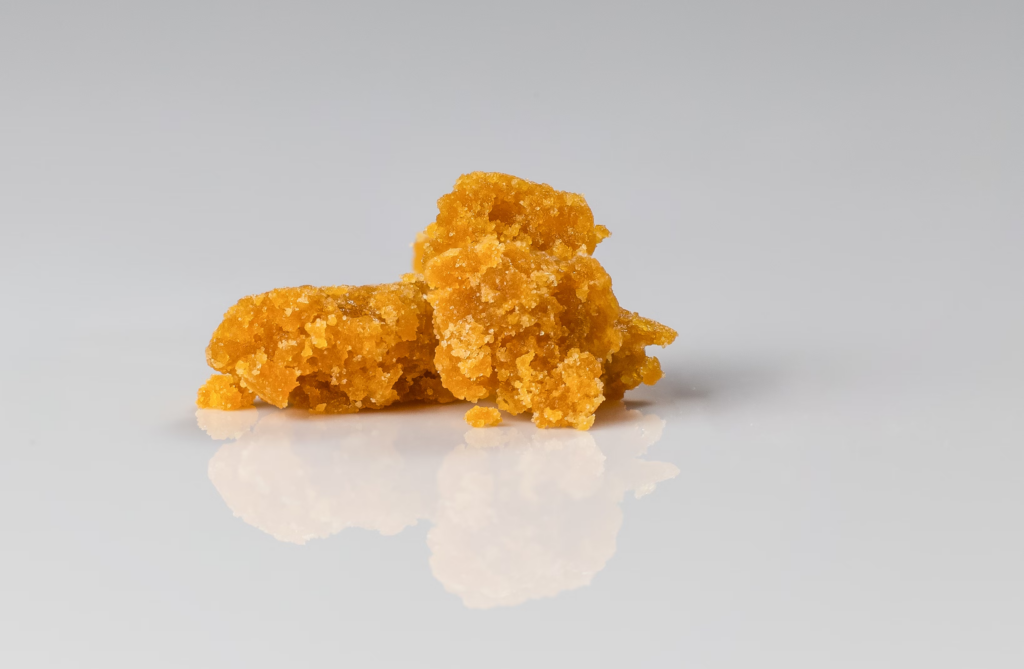
Marijuana concentrates that can dabbed include:
Note that some types of cannabis concentrates are not on this list–that’s because they’re not meant to be dabbed. Highly flammable, alcohol-based extracts (such as alcohol-based Rick Simpson oil, tinctures, and ISO Wax) are not meant to be dabbed.
If you’re unsure of how to use a particular form of concentrate, check with your dispensary to make sure you know the right way to use your product.

Smoking concentrates requires more equipment than most consumption methods. Let’s break down what you need to smoke dabs.
To smoke dabs, you need a main rig and some accessories.
For your main rig, you can use one of three options:
To use a dab rig, you need a few accessories:
There are also optional accessories to consider:
Lastly, these things will help you keep your dab rig clean:
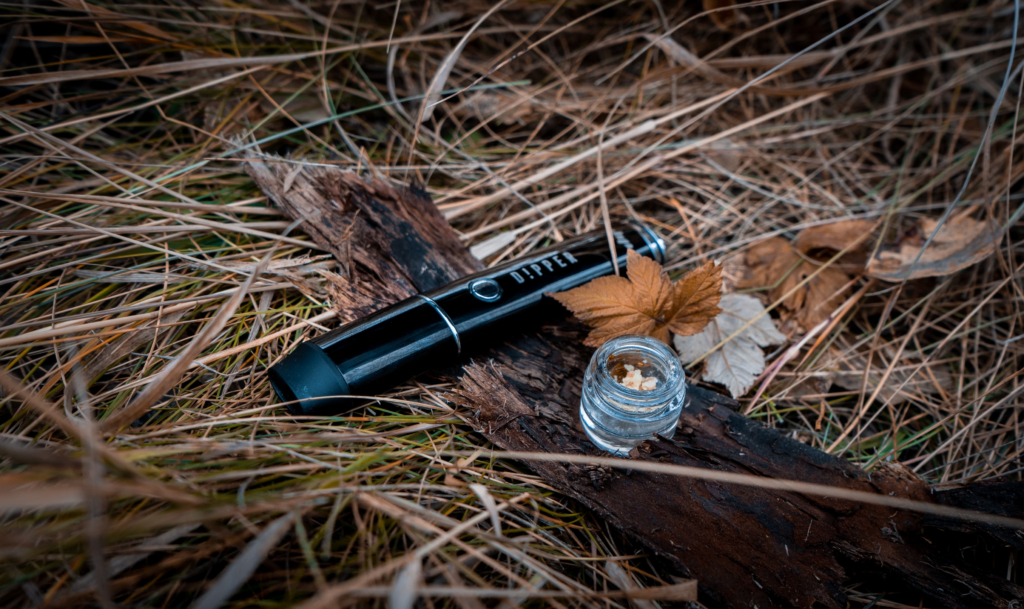
Once you have your equipment, it’s time to start dabbing. E-rigs, dab pens, and e-nails can have unique instructions that are specific to the exact product, so be sure to carefully read your device’s manual before using it. If you’re using a traditional dab rig, follow these five steps.
Use your dabber tool to pick up a small amount of your concentrate of choice, then set it aside for later use. Remember that concentrates are highly potent. If you’re not sure how much to pick up, err on the side of using too little rather than using too much.
Add water to your dab rig’s water chamber. If you’re not sure how much water to add, try inhaling on your mouthpiece with no dab nail in place. If water splashes into your mouth, you need to pour water out.
Using your torch, heat your dab nail until it’s red. Apply the torch to the outside and bottom of your dab nail. Remember to be careful when you’re done using your torch. Be sure it’s turned off when you set it down.
Once the nail is very hot, stop applying heat and allow it to cool off for around 30 to 45 seconds. You want your nail to be hot enough to vaporize your dabs, but not so hot that it scorches them.
After your nail has cooled off a bit, add your dab to the nail using your dabber tool and slowly inhale. You can rotate your dabber tool in the hot nail to heat your dab evenly and avoid sticking. Inhale slowly and evenly.
If you have a carb cap, you can quickly place it over your nail after adding your dab. Experiment with adjusting your carb cap as needed to keep an ideal temperature.
Lastly, clean your nail when you’re done using it. A quick swipe with a cotton swab is good enough to clean extra material from most ceramic nails, glass nails, titanium nails, and quartz nails. But if your nail has any stubborn, sticky residue, clean it with a drop of isopropyl alcohol and a cotton swab.
We hope this guide has been helpful for beginners who are just starting to dabble in dabbing. If you have any questions about dabs or how to use them, visit a DC Collective dispensary near you and speak with one of our expert team members.

A cannabis tincture is a liquid extract made from the cannabis plant. It is a popular and effective form of cannabis medicine that offers a convenient and discreet way to consume cannabis. Tinctures can be made with either THC or CBD and are usually made using an alcohol base, although other solvents can also be used. Cannabis tinctures are typically taken sublingually, meaning they are held under the tongue for 15-30 seconds before swallowing. This allows for faster absorption into the bloodstream, resulting in a quicker onset of effects compared to other consumption methods such as edibles or inhalation. Tinctures are available in various strengths and can be easily dosed using bottles with droppers, making them suitable for both beginners and experienced cannabis consumers.
Cannabis tinctures have emerged as a popular choice for those seeking the benefits of cannabis in a convenient and discreet form. There are several reasons why cannabis tinctures are becoming the preferred method of consumption for many individuals.
One of the main advantages of cannabis tinctures is their quick absorption. By taking a few drops under the tongue, the medicinal compounds found in the cannabis plant can quickly enter the bloodstream, providing faster relief compared to other consumption methods.
Another benefit of tinctures is the precise dose control they offer. With a dropper or spray bottle, users can easily measure and adjust their dose according to their individual needs. This helps in achieving desired effects while avoiding overconsumption.
Discreetness is another key advantage of cannabis tinctures. They come in small glass bottles, allowing users to consume their dose discreetly without drawing unwanted attention. This makes tinctures a great option for individuals who need to medicate in public or in situations where vaporizing or smoking may not be appropriate.
Lastly, cannabis tinctures have a long shelf life when compared to other cannabis products. Properly stored in a cool, dark place, tinctures can remain effective for an extended period. This makes them a convenient and cost-effective choice for those who prefer to have cannabis medicine on hand.

Cannabis tinctures offer a multitude of benefits that make them a popular choice among cannabis consumers. One of the biggest advantages of these tinctures is their fast-acting effects. When taken sublingually, the medicinal compounds found in the cannabis plant quickly enter the bloodstream, providing rapid relief compared to other consumption methods. This makes tinctures an ideal option for individuals seeking immediate relief from conditions such as pain, insomnia, nausea, inflammation, and anxiety.
Another key benefit of cannabis tinctures is their easy dose control. With a convenient dropper or spray bottle, users can easily measure and adjust their dosage according to their individual needs. This allows for precise dosing and helps avoid overconsumption, ensuring the desired effects are achieved without the risk of taking too much.
Discretion is also a distinct advantage of cannabis tinctures. Coming in small glass bottles, tinctures allow users to consume their dose discreetly and without drawing unwanted attention. This makes them a great choice for individuals who need to medicate in public or in situations where vaporizing or smoking may not be appropriate.
Lastly, cannabis tinctures offer a wide range of medical benefits. They have been found to provide relief from various ailments, including pain, insomnia, nausea, inflammation, anxiety, seizures, and more. This versatility makes tinctures a potent and convenient form of cannabis medicine.
When it comes to cannabis tinctures, there are different types available to suit various needs and preferences. One popular type is CBD tinctures, which are made from cannabis plants with 0.3% THC or less. These tinctures offer the potential health benefits of CBD without the psychoactive effects of THC. They are ideal for individuals who want to experience the therapeutic effects of cannabis without getting high.
Another type of cannabis tincture is full-spectrum. These tinctures contain a wide range of cannabinoids, including THC, CBD, and other beneficial compounds found in the cannabis plant. The inclusion of THC in full-spectrum tinctures allows for the entourage effect, where the different cannabis compounds work together synergistically to enhance their overall therapeutic benefits.
Broad-spectrum tinctures, on the other hand, are similar to full-spectrum tinctures but with one key difference – they have had the THC removed. This type of tincture is a great option for individuals who want to avoid THC altogether, whether due to personal preference or concerns about THC showing up in a drug test.
Lastly, there are isolate tinctures. These tinctures contain only pure CBD or another isolated cannabinoid, with all other cannabinoids and compounds removed. Isolate tinctures are popular among users who want the purest form of CBD without any other plant compounds.
No matter which type of cannabis tincture you choose, it's important to store them properly. Tinctures should be kept in airtight dark glass containers to protect them from light and air, which can degrade the cannabinoids. This ensures that the tincture remains potent and effective for a longer period.
Overall, the different types of cannabis tinctures offer varying levels of THC content and a range of potential health benefits. Whether you prefer CBD-only tinctures or full-spectrum options, cannabis tinctures provide a discreet and fast-acting way to experience the therapeutic effects of cannabis.
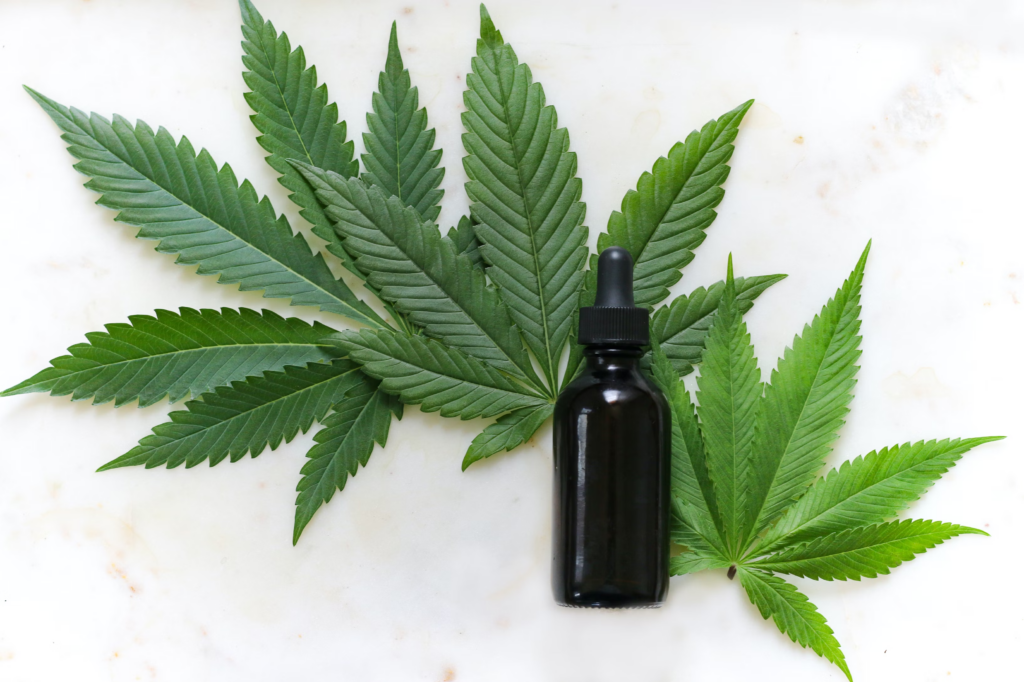
When it comes to consuming cannabis tinctures, there are various delivery methods to consider. The most common and convenient method is sublingual administration, where a few drops of the tincture are placed under the tongue and held for 15-30 seconds before swallowing. This allows for quick absorption through the blood vessels under the tongue, resulting in faster onset of effects. For those who prefer a more discreet approach, adding tincture drops to food or beverages is another popular option. The liquid form of cannabis tinctures makes it easy to mix into drinks or incorporate into recipes. Alternatively, tinctures can also be added to capsules for oral ingestion. This method provides a more controlled and precise dosage, ideal for individuals with specific medical needs. Additionally, tinctures can be used topically by applying directly to the skin for localized relief. It is important to note that the effects and onset time may vary depending on the delivery method chosen, so it is advisable to start with a low dosage and gradually increase as needed.
Dropper bottles with droppers are commonly used as a convenient and efficient delivery method for cannabis tinctures. These bottles provide precise dosing and easy administration, making them a popular choice among cannabis consumers.
To use a dropper bottle with a dropper, follow these simple steps:
1. Shake the bottle: Before using the dropper bottle, give it a good shake to ensure that the cannabis tincture is well-mixed.
2. Squeeze the dropper: Gently squeeze the rubber bulb at the top of the dropper to create suction.
3. Dip the dropper into the tincture: Insert the dropper into the bottle, making sure the bottom end is fully submerged in the tincture.
4. Release the bulb: Slowly release the bulb, allowing the tincture to be drawn up into the dropper.
5. Administer the tincture: With the dropper filled, place the tip under your tongue and squeeze the bulb to release the desired amount of tincture. Hold the tincture under your tongue for 15-30 seconds before swallowing to allow for optimal absorption.
Dropper bottles with droppers offer several benefits for cannabis tincture consumption. The dropper allows for precise dosing, making it easier to control the amount of tincture consumed. This is particularly important for individuals with specific medical needs or those trying to manage their tolerance levels. Additionally, the small and portable nature of dropper bottles makes them discreet and easy to carry on the go.
If you're looking for an alternative delivery method for cannabis tinctures, oral syringes are worth considering. These syringes offer precise dosing and are ideal for individuals who do not enjoy the taste of tinctures.
To use an oral syringe, simply draw the desired amount of tincture into the syringe. Similar to the dropper method, you can then administer the tincture under your tongue. Holding it there for 15-30 seconds allows for optimal absorption before swallowing.
One of the key advantages of oral syringes is their ability to provide precise dosing. The syringe allows you to accurately measure the amount of tincture you want to consume, making it easier to control your intake. This is especially beneficial for individuals with specific medical needs or those who want to manage their tolerance levels.
In addition, using an oral syringe can help mask the taste of tinctures for those who find it unpleasant. By administering the tincture directly under the tongue, you can avoid the taste buds while still experiencing the desired effects.
Oral sprays have emerged as a popular delivery method for cannabis tinctures, offering cannabis consumers a convenient and discreet way to consume their preferred cannabis products. With precise dosing and a faster onset of effects, oral sprays are becoming a preferred choice for many individuals.
Using oral sprays is a simple and straightforward process. Just like with traditional tinctures, you can measure the desired amount of cannabis tincture into the spray bottle. When you're ready to use it, simply spray the desired dose into your mouth, aiming for the area under your tongue. Holding it there for a short period allows for direct absorption into the bloodstream.
One of the significant advantages of oral sprays is their ability to offer precise dosing. With clear labeling and measured sprays, it becomes easier to control your intake and find the optimal dosage for your needs. This is especially beneficial for individuals with specific medical requirements or those looking to manage their tolerance levels effectively.
Another notable benefit of oral sprays is their faster onset of effects. By administering the tincture directly under the tongue, it bypasses the gastrointestinal system and liver, allowing for quicker absorption into the bloodstream. This means that the effects of the cannabis tincture can be felt in as little as 15-30 minutes, providing a more immediate experience for cannabis consumers.
In addition to the convenience and fast-acting effects, oral sprays also offer discretion. The compact size and simple design of the spray bottle make it easy to carry and use without drawing unwanted attention. Whether you're at home, at work, or in public, oral sprays allow you to discreetly consume your cannabis tincture without any hassle.

Sublingual application is a popular and effective method for delivering cannabis tinctures. It involves placing the tincture under the tongue, allowing for rapid absorption into the bloodstream through the sublingual artery. This method bypasses the digestive system, ensuring that the tincture's chemical makeup is preserved and rapidly reaches the brain.
Sublingual application offers several advantages over other consumption methods. Firstly, the sublingual artery allows for direct absorption into the bloodstream, resulting in faster onset of effects compared to ingestion or inhalation. Within 15-30 minutes, users can experience the therapeutic benefits of the cannabis tincture.
Moreover, sublingual administration bypasses the liver, avoiding the breakdown of cannabinoids by digestive enzymes. As a result, the full potency of the tincture is available for the body to absorb and utilize. This makes sublingual application an ideal choice for individuals seeking fast-acting relief.
Additionally, sublingual application provides precise dosing control. By placing the tincture under the tongue, users can easily measure and adjust their dosage to suit their specific needs. This is particularly beneficial for medical patients or those looking to manage their tolerance levels effectively.
If you're looking to explore the realm of cannabis tinctures and other high-quality cannabis products, we highly recommend checking out DC Collective, a premier cannabis dispensary in the San Fernando Valley. With their extensive selection, knowledgeable staff, and commitment to providing a safe and enjoyable experience for their customers, DC Collective stands out as a trusted destination for all your cannabis needs.
Don't miss out on the chance to elevate your cannabis journey with top-notch products and expert guidance. Head over to DC Collective and discover the possibilities that cannabis tinctures can unlock for you. Embrace the world of cannabis tinctures, and embark on a journey of relaxation, relief, and exploration today!
In recent years, there has been a growing interest in cannabis and its various forms. One particular component of the cannabis plant that has gained significant attention is cannabis resin. Also known as hashish or simply "hash," cannabis resin holds a rich history and a wide range of applications. Whether you're a seasoned cannabis enthusiast or a curious newcomer, understanding the basics of cannabis resin can enhance your knowledge and appreciation for this remarkable substance.
In this comprehensive guide, we will delve into the world of cannabis resin, exploring its origins, extraction methods, chemical composition, and potential uses. We'll also address some common misconceptions and provide insights into its legal status in different parts of the world. By the end, you'll have a solid grasp of the fundamentals of cannabis resin and how it fits into the broader cannabis landscape.
So, if you've ever wondered what cannabis resin is, how it differs from other cannabis products, or what makes it so highly sought after, you've come to the right place. Get ready to embark on a fascinating journey through the world of cannabis resin as we uncover its history, properties, and the myriad ways it can be enjoyed and utilized.
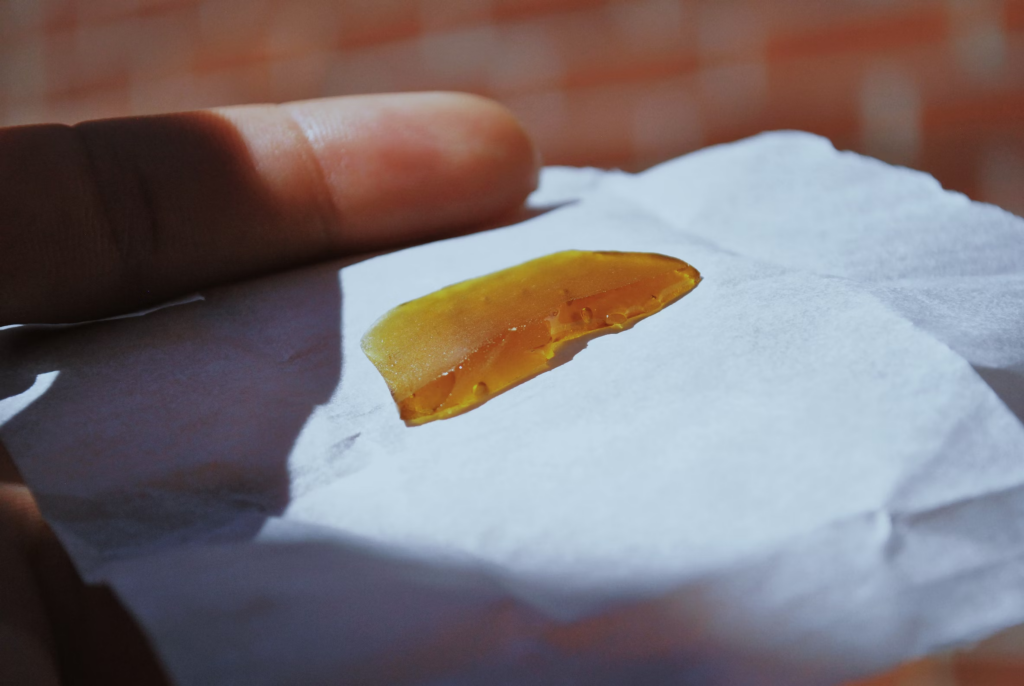
Live resin is a type of cannabis concentrate that has quickly gained popularity within the cannabis community due to its unique extraction process and exceptional characteristics. Unlike other cannabis concentrates, live resin is made using flash-frozen cannabis plants instead of dried and cured buds. This process allows for the preservation of the plant's natural terpene profile, resulting in a product with a robust and complex terpene profile.
Cannabis aficionados highly value live resin due to its ability to provide a more authentic and nuanced experience of the strain's natural aroma and flavor. The robust terpene profile of live resin provides a more complex and layered taste that allows users to fully appreciate the unique traits of each strain. The cannabinoid profile of live resin is also highly sought-after, as it can contain concentrated levels of THC, CBD, and other cannabinoids.
There are various types of live resin available, each with its unique color and texture. Amber/golden live resin is the most common variety, which often has a sugary texture and a bright, amber/gold color. White live resin, on the other hand, has a more crumbly texture and a pale yellow color. Other colors of live resin are also available, depending on the strain of cannabis used.
Live resin offers numerous benefits compared to other forms of cannabis resin. The use of fresh, flash-frozen cannabis plants preserves the terpene profile of the plant, resulting in a concentrate with a more robust and complex flavor. The potent cannabinoid profile of live resin, combined with its high terpene content, also offers users a more profound and long-lasting experience.

Live resin is a premium cannabis concentrate extracted from freshly harvested flowers. It involves flash-freezing the flowers to preserve their natural terpene and cannabinoid profiles. The process starts with immediate freezing of the flowers using liquid nitrogen or dry ice, ensuring the preservation of terpenes and cannabinoids.
The next step is a closed-loop extraction system utilized to extract valuable compounds from the plant material. This system prevents solvent leakage, ensuring a safe and efficient extraction process. Butane or supercritical CO2 are commonly used solvents known for their effectiveness and cleanliness.
Once the extraction is complete, a highly concentrated substance is obtained, containing all the beneficial compounds from the cannabis plant. To ensure purity, the substance undergoes purification and refinement to eliminate any residual solvents or impurities.
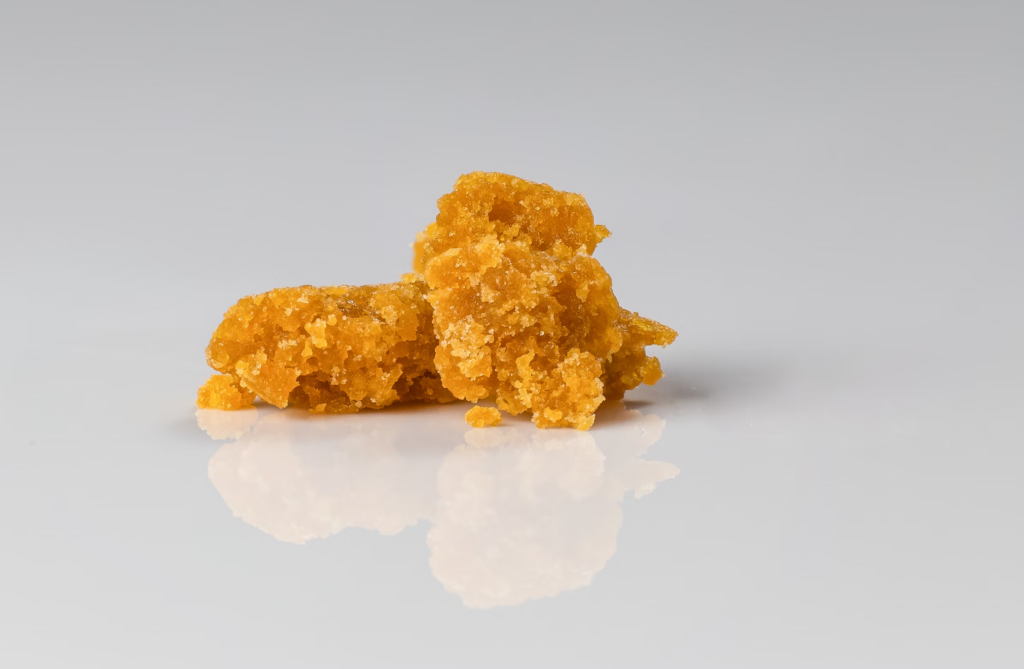
When it comes to cannabis concentrates, two popular options that are often compared are live rosin and live resin. While both are known for their strong potency and flavor, there are key differences in their production and characteristics.
Live Rosin
Live rosin is a type of concentrate that uses a solventless extraction process, meaning it does not involve any harmful chemicals. The process begins by freezing freshly harvested cannabis plant material to preserve its terpene content. This frozen material is then pressed at a low temperature using heat and pressure to extract the trichomes, resulting in a sticky, resinous substance with a golden color. Live rosin is known for its full-bodied terpene profile and intense flavor. Live rosin has a shiny golden color and a thick, sticky texture that can be easily manipulated using a dab tool. Known for its natural terpene profile and purity, it does not involve any solvents.
Live Resin
On the other hand, live resin is made using solvent-based extraction methods such as butane or propane. This process involves blasting the cannabis buds or plant material with a solvent to dissolve the trichomes, which are then separated from the solvent using heat and vacuums. Unlike live rosin, this process can result in a softer, budder-like texture and a more varied terpene profile depending on the strain used. Live resin can range in color from light yellow to darker amber and typically has a softer texture that can be harder to handle. The terpene profile of live resin will depend on the strain used and the extraction method, but it is generally known for its complex flavor profile.
It's worth noting that there are also dried plant-based resins and rosins that are made using similar extraction methods, but with cured or dried plant material instead of fresh, "live" plants. These concentrates may have a different terpene profile, color, and texture compared to their live counterparts.

Live resin can be used in various ways, each providing a unique experience. One way to enjoy it is by adding it to a joint or bowl of flower. Known as smoking live resin-infused flower, this method is simple yet effective. Start by grinding the flower and adding a small amount of live resin to it before rolling it up or packing it in a bowl. The live resin will enhance the flavor and potency of the flower, providing a more intense experience.
Another convenient way to use live resin is by using a live resin pen, which is a pre-filled vape cartridge making it easy to use and discreet making it a popular method. Simply attach the cartridge to a compatible battery and take a puff. The live resin pen allows for precise dosing and provides an on-the-go option for cannabis aficionados.
Traditional methods of dabbing live resin involve using a dab rig, e-nail, or nectar collector. Dab rigs are similar to bongs, but use a nail or banger instead of a bowl. The live resin is placed on the heated nail which vaporizes the concentrate, and the vapor is then inhaled through the rig. E-nails provide more precise temperature control and eliminate the need for a torch. Nectar collectors, also known as honey straws, are handheld devices used to vaporize live resin. They are typically made up of a glass or quartz tip and a straw-like body.
If you're a cannabis aficionado, then you're likely familiar with live resin, one of the most potent and flavorful forms of cannabis concentrates. But with so many live resin products available on the market, how do you choose the best one for your needs? Here are the essential factors to consider when selecting high-quality live resin:
1. Start with Quality Source Material: One of the most crucial factors in producing high-quality live resin is the source material. For the best results, look for live resin made from fresh, flash-frozen cannabis plants with a robust terpene profile. The source material will determine the final flavor, aroma, and overall potency of the live resin.
2. Choose a Reputable Extractor: The extraction method used to make live resin plays a vital role in the final product's quality. Therefore, it's essential to select a reputable extractor that specializes in solvent-based extraction methods, such as carbon dioxide or emotek labs. This ensures that the live resin is free from any harmful solvents or contaminants that could compromise its quality.
3. Check the Strain of Cannabis: Not all cannabis strains are suitable for live resin extracts. Some strains have a higher yield of resin than others, resulting in a more potent product. Therefore, it's essential to check the strain of cannabis used in the live resin to ensure that it's the right type for your preferences.
4. Pay Attention to the Terpene Content: The terpene content in live resin plays a significant role in the entourage effect and overall flavor. Thus, it's essential to select products that have a complex and natural terpene profile, providing a more potent and flavorful experience.
5. Look for Transparent Lab Testing Results: Finally, it's crucial to select live resin products with transparent lab testing results. This ensures that the product is free from contaminants and is safe for consumption. Always check for lab testing results before making a purchase.
Live resin, a type of cannabis concentrate, has become a popular choice among cannabis aficionados due to its complex terpene profile and robust flavor. However, when it comes to the question of safety, it is crucial to purchase live resin from licensed dispensaries and legal markets to ensure that it meets state health requirements.
Overall, live resin is generally safe to use, but it is essential to purchase it from a reliable source to ensure its quality. As a potent concentrate, live resin is much more potent than cannabis flower, so caution should be exercised when using it for dabbing or vaping. It is not recommended to eat live resin, as it can have adverse effects on your health.
Live resin is safe to use but should only be purchased from licensed dispensaries and legal markets to ensure that it meets health requirements imposed by the state. As a potent concentrate, it is not recommended to be eaten but can be used for dabbing or vaping. Always exercise caution when using live resin and follow dosage recommendations to prevent any adverse effects.
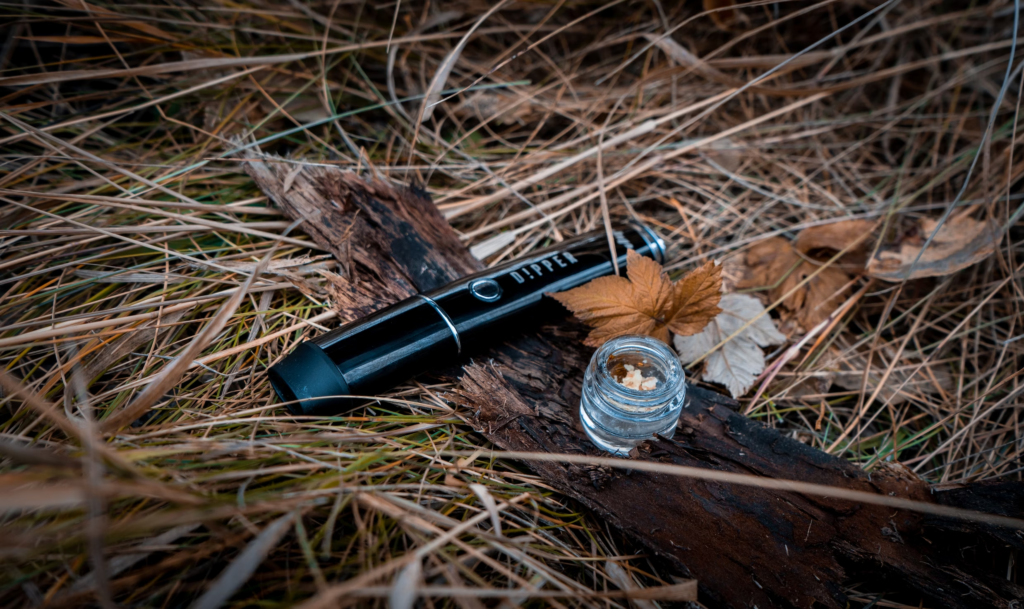
Discover the wonders of cannabis resin! With its robust terpene profile and high concentrations of flavonoids and THC, this essential component of the cannabis plant provides both psychoactive and therapeutic benefits. Learn about extraction methods, types, and modes of use in our comprehensive guide. Shop live resin products and other cannabis goodies at DC Collective to enhance your experience. Don't miss out on the complex terpene profiles and diverse uses of cannabis resin—it's a must-have for all cannabis enthusiasts. Dab or vape, there's something for everyone!
If you're a cannabis enthusiast or a beginner exploring the world of cannabis, you may have come across the terms "Sativa" and "Indica." These are two main types of cannabis plants that have distinct characteristics and effects. Understanding the differences between Sativa and Indica can help you make informed choices when selecting strains for your preferences and needs.
In this blog, we'll explore the key differences between Sativa and Indica, including their physical characteristics, effects, and terpene content. Let's dive into the fascinating world of Sativa vs. Indica and unravel how they differ!
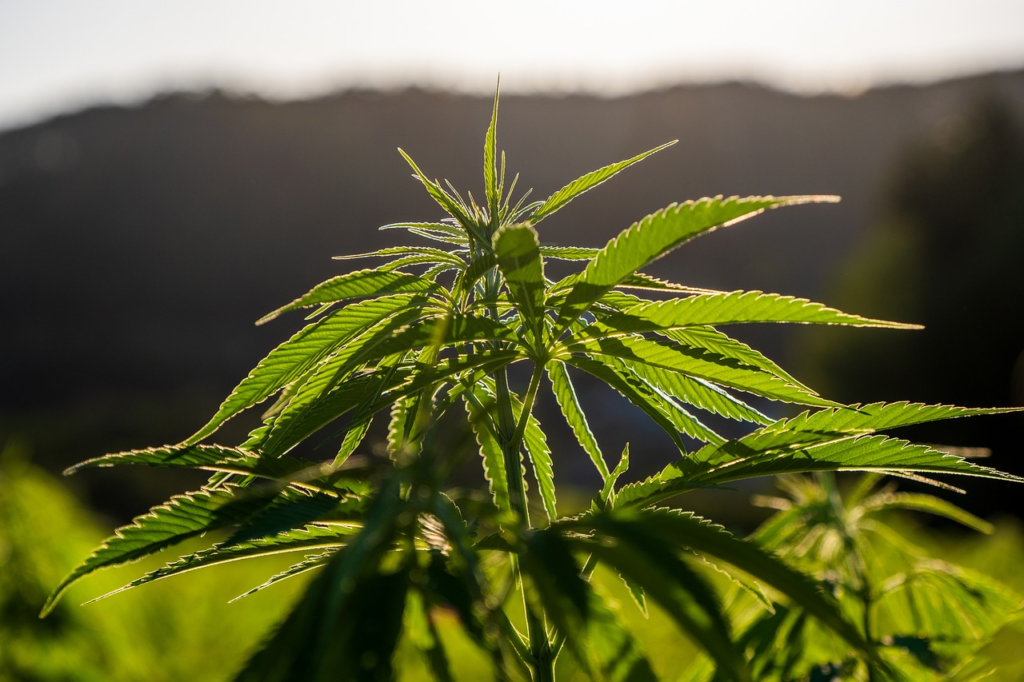
Sativa strains are believed to have originated in equatorial regions, such as parts of Africa, Southeast Asia, and South America. Historically, Sativa plants were cultivated for their fiber, seeds, and medicinal properties. Sativa strains are known for their tall and thin plants with narrow leaves, and they are often associated with uplifting and energizing effects.
Indica strains are believed to have originated in the Hindu Kush region of the Indian subcontinent. Indica plants are typically shorter and bushier with wider leaves, and they are known for their sedating and relaxing effects. Indica strains were historically used for their medicinal properties, including pain relief and relaxation.
Over time, cannabis cultivation and hybridization have resulted in a wide range of Sativa, Indica, and hybrid strains with varying characteristics. Today, the terms Sativa and Indica are commonly used to categorize cannabis strains based on their purported effects and physical traits, although the scientific validity of these classifications is debated.
Understanding the historical origins and evolution of Sativa and Indica can provide a foundation for further exploration of their differences in terms of plant morphology, effects, medicinal properties, growing requirements, aroma and flavor profiles, and popular strains. Cannabis laws and regulations vary by region, and it's essential to comply with local laws when growing, using, or discussing cannabis-related topics.
The physical characteristics of Sativa and Indica cannabis strains can vary significantly, providing valuable clues for identifying and differentiating between them. Understanding these differences can help cannabis enthusiasts and growers recognize the unique traits of each subspecies.
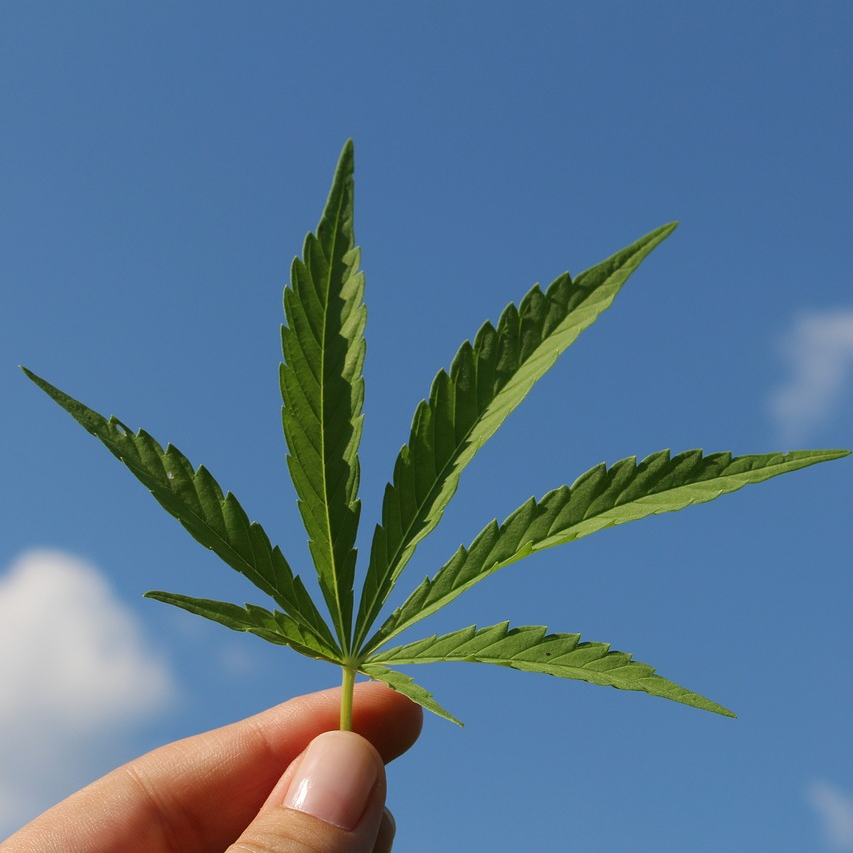
Sativa plants are known for their tall and thin structure, with long branches and narrow leaves. Sativa leaves tend to have more space between each leaflet, giving them a feathery appearance. Sativa strains can reach heights of up to 20 feet or more in some cases, making them ideal for outdoor cultivation in regions with longer growing seasons. Sativa buds are typically less dense and have a looser structure, with longer and thinner buds.
In contrast, Indica plants are generally shorter and bushier, with shorter branches and wider leaves. Indica leaves tend to be broader and thicker compared to Sativa leaves, and the leaflets are often closely spaced. Indica strains are well-suited for indoor cultivation due to their compact size and shorter flowering times. Indica buds are typically denser and have a tighter structure, with shorter and thicker buds.
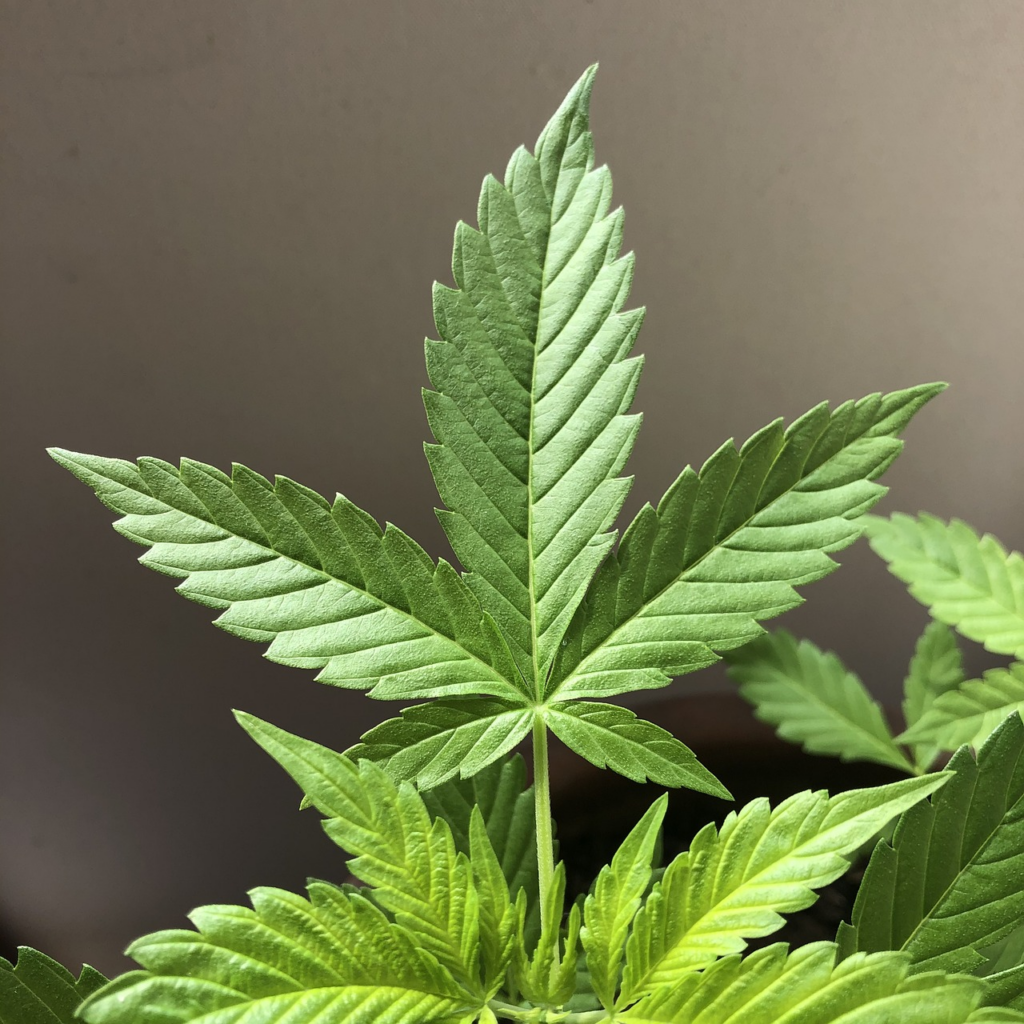
Another factor that can influence the effects of Sativa and Indica strains is the climate in which they are grown. Sativa strains are typically associated with a warm and dry climate, such as those found in tropical regions, while Indica strains are often found in dry and cooler climates.
The distinction between Sativa and Indica strains may not always be clear-cut, as many cannabis strains today are hybrids that exhibit a combination of traits from both subspecies. Consulting reputable sources and conducting genetic testing can provide more accurate information about the genetic makeup of a particular cannabis strain.

The effects and highs produced by Sativa and Indica cannabis strains can vary significantly, offering distinct experiences for users.
Terpene content, or the aromatic compounds found in cannabis plants, can play a significant role in the effects of Sativa and Indica strains.
Sativa strains tend to have higher levels of certain terpenes that can produce a more uplifting and energizing effect, while Indica strains may contain different terpenes that can promote more calming and sedative effects.
When it comes to sativa effects, these strains are often favored for their uplifting and stimulating effects, making them popular for daytime use. Sativa products, such as flower, concentrates, and edibles, are commonly found in marijuana dispensaries and are sought after for their ability to provide increased focus, creativity, and sociability.
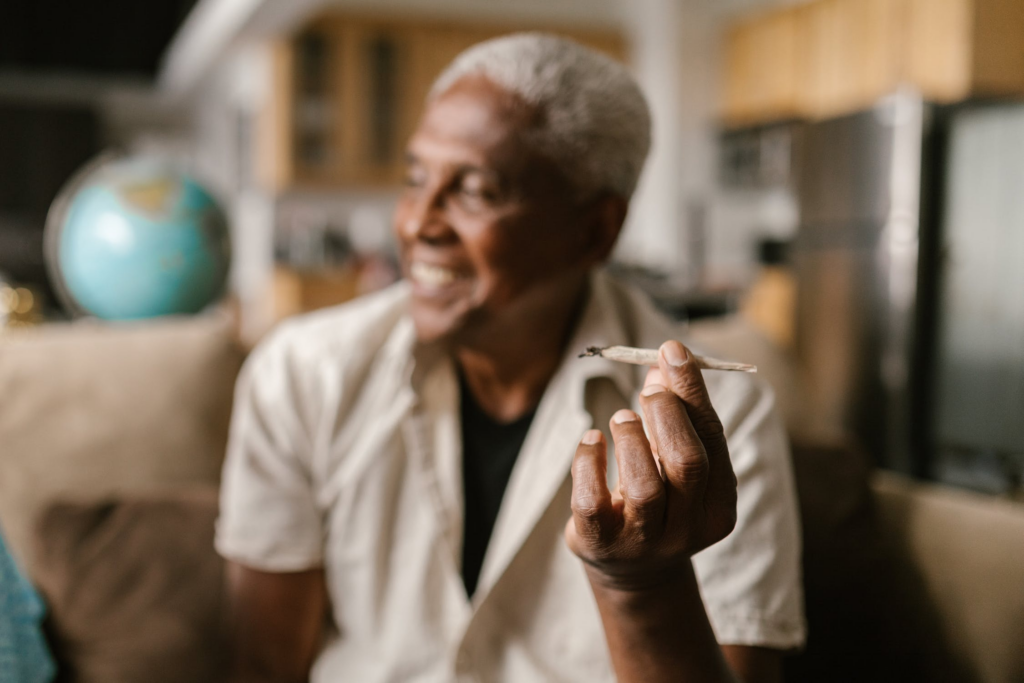
Indica strains are typically associated with calming, relaxing, and sedating effects. They are known to induce deep relaxation, promote sleep, and relieve stress and anxiety. Indica strains are often preferred for evening or nighttime use, or for relaxation and stress relief purposes.
Indica strains are known for their calming effects and are often used for relaxation and stress relief. Indica strains can be beneficial for managing conditions such as muscle pain, insomnia, and anxiety due to their sedative effects. Indica products are also commonly used for promoting appetite and alleviating appetite loss.
It's important to note that the effects of Sativa and Indica strains on the human body can vary depending on individual tolerance, dosage, and other factors. While there is scientific evidence supporting some of the common effects attributed to Sativa and Indica strains, it's also important to consider that the psychoactive effects of cannabis can be subjective and vary from person to person.
Like any substance, cannabis can have potential negative side effects. Sativa strains, known for their intense effects, may not be suitable for everyone and may cause negative effects such as anxiety, paranoia, or increased heart rate. Indica strains, with their sedative effects, may cause drowsiness or impaired coordination in some individuals.
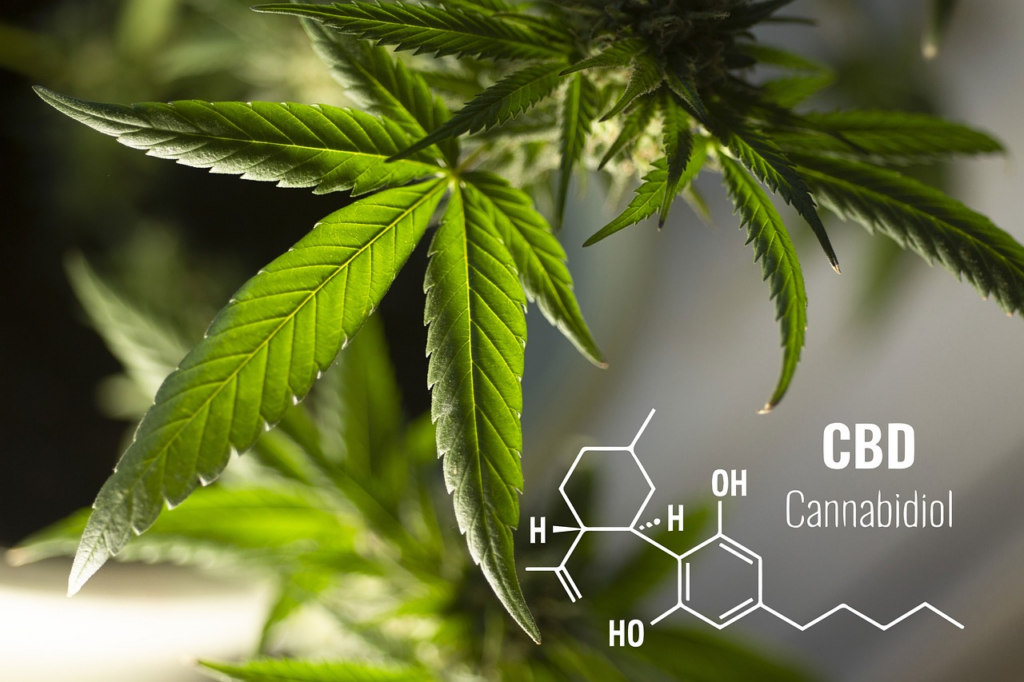
Both Sativa and Indica are known for their therapeutic properties, but they can offer distinct benefits due to their differing characteristics.
Sativa strains are often associated with uplifting and energizing effects, which can make them beneficial for managing conditions such as depression, fatigue, and mood disorders. Sativa strains are also known for their potential to enhance creativity, focus, and sociability, making them suitable for those seeking relief from symptoms of ADHD, PTSD, or social anxiety.
Indica strains are typically associated with calming and relaxing effects, which can make them useful for managing conditions such as anxiety, stress, and insomnia. Indica strains are also known for their potential to provide pain relief, muscle relaxation, and anti-inflammatory effects, making them suitable for those seeking relief from conditions such as chronic pain, muscle spasms, and arthritis.
Furthermore, both Sativa and Indica strains can contain varying levels of cannabinoids and terpenes, which can further influence their therapeutic effects. For example, Sativa strains may be higher in THC, which can provide euphoric effects, while Indica strains may be higher in CBD, which can provide anti-inflammatory and analgesic effects.
The therapeutic benefits of Sativa and Indica strains can vary depending on the individual and their specific health needs. Consulting with a healthcare professional and experimenting with different strains and dosages can help individuals find the strain that best suits their therapeutic needs.
The aroma and flavor profiles of cannabis strains can offer a unique sensory experience, with Sativa and Indica strains often displaying distinct differences.
Sativa strains are known for their uplifting and energetic effects, and their aroma and flavor profiles often reflect this. Sativa strains tend to have a more citrusy, fruity, and sweet aroma, with notes of lemon, pine, and tropical fruits. The flavor profile of Sativa strains can be described as bright, tangy, and refreshing, with hints of citrus, herbs, and spices.
Indica strains are typically associated with calming and relaxing effects, and their aroma and flavor profiles can differ from Sativa strains. Indica strains often have a more earthy, musky, and skunky aroma, with notes of pine, spice, and herbs. The flavor profile of Indica strains can be described as rich, deep, and savory, with hints of earthy, woody, and sweet flavors.
The aroma and flavor profiles of cannabis strains can also be influenced by various factors, including cultivation methods, terpene profiles, and curing processes. Additionally, individual perception and preference for aroma and flavor can vary. Experimenting with different strains and paying attention to the aroma and flavor profiles can add another layer of enjoyment to the cannabis experience for those who appreciate the sensory aspects of cannabis.
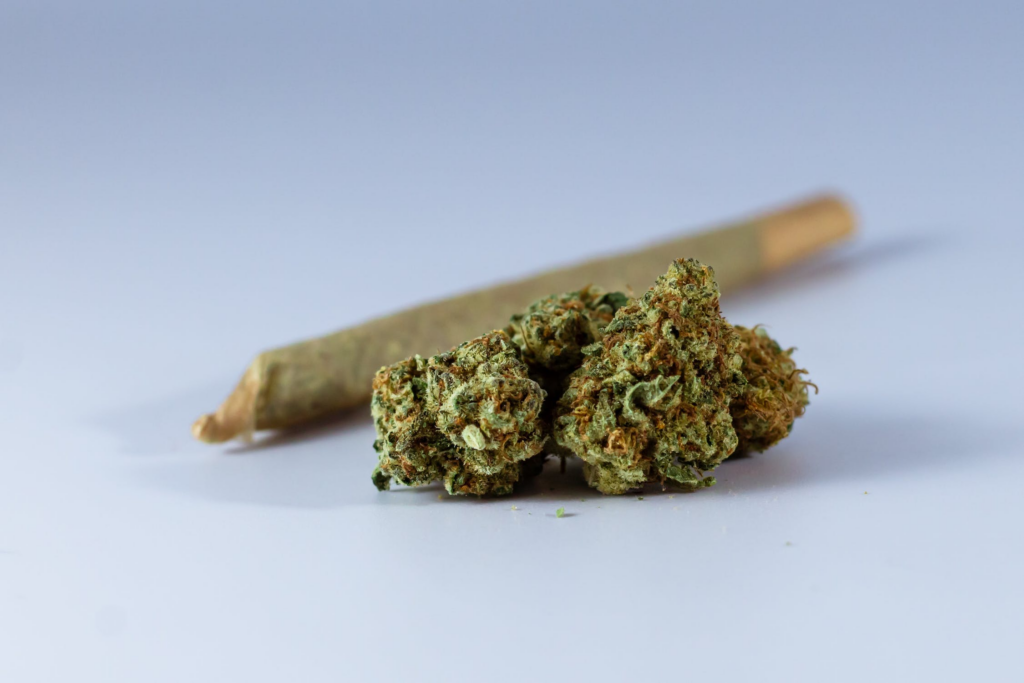
Indica strains such as Bubba Kush are known for their relaxing and sedative effects, making them a popular choice for those seeking relief from muscle pain, anxiety, and insomnia.
Sativa strains like Sour Diesel, Pineapple Express, and Blue Dream are often associated with uplifting and energizing effects, making them sought-after options for those looking for increased creativity, focus, and mood elevation.
Whether you're a fan of the calming effects of Indica or the invigorating effects of Sativa, there are numerous strains to choose from to suit your preferences and needs at marijuana dispensaries. It's essential to do your research and consult with knowledgeable budtenders to find the right strain that aligns with your desired effects and overall experience.
In conclusion, Sativa and Indica strains of cannabis offer distinct effects that can be beneficial for different purposes. The effects of cannabis can vary depending on individual factors and consulting with a healthcare professional or budtender at a marijuana dispensary can provide personalized guidance.
Exploring the history, physical characteristics, effects, and aroma/flavor profiles of Sativa and Indica strains can help you make informed choices when selecting cannabis strains that align with your preferences and health needs. Consulting with a healthcare professional and experimenting with different strains can also aid in finding the right strain for your individual requirements.
If you're looking to experience the diverse world of Sativa and Indica strains, visit DC Collective, a trusted cannabis dispensary. With a wide selection of premium cannabis products, knowledgeable staff, and a commitment to quality, DC Collective is your destination for top-notch cannabis strains and a personalized cannabis experience.
Ready to explore the world of Sativa and Indica strains? Visit DC Collective, your premier cannabis dispensary, to discover a wide selection of high-quality cannabis products. Whether you're a seasoned cannabis enthusiast or new to the world of cannabis, our knowledgeable staff is here to assist you in finding the perfect strain for your needs. Don't miss out on the diverse and unique characteristics of Sativa and Indica cannabis strains - visit DC Collective today!
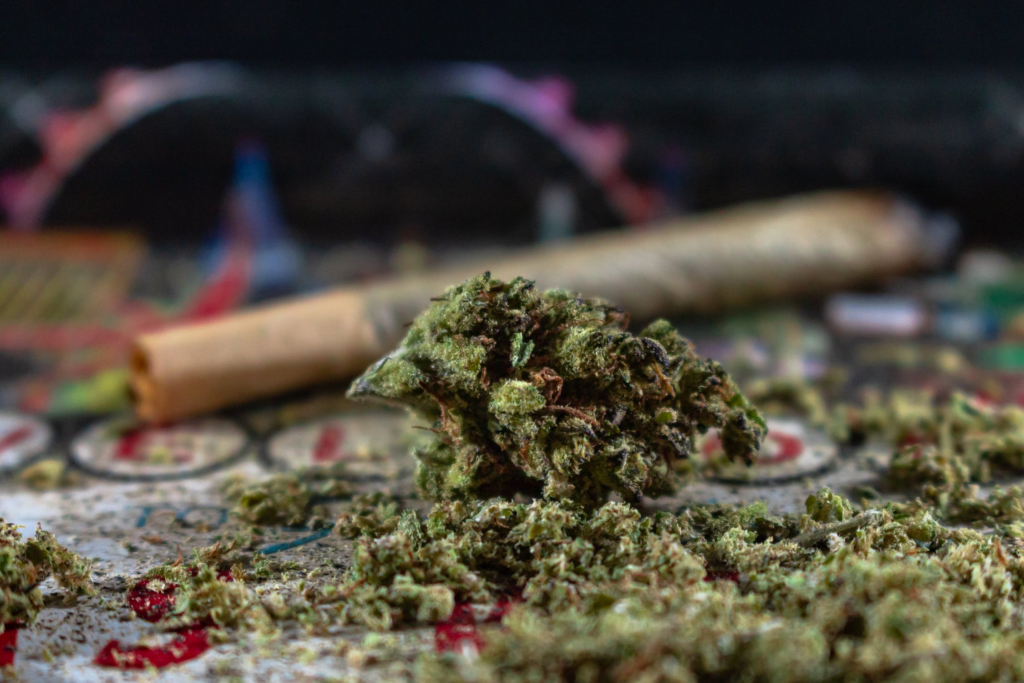
When it comes to cannabis, potency can vary greatly, and understanding how long it lasts can be helpful for ensuring you're getting the most out of your cannabis experience. The potency lifespan of fresh weed depends on various factors, including how it's stored and the conditions it's exposed to. Over time, the potency of weed will naturally decline, and it's important to be aware of this when planning your consumption. This guide will explore the different factors that affect the potency lifespan of weed and provide tips for keeping your cannabis fresh for as long as possible.
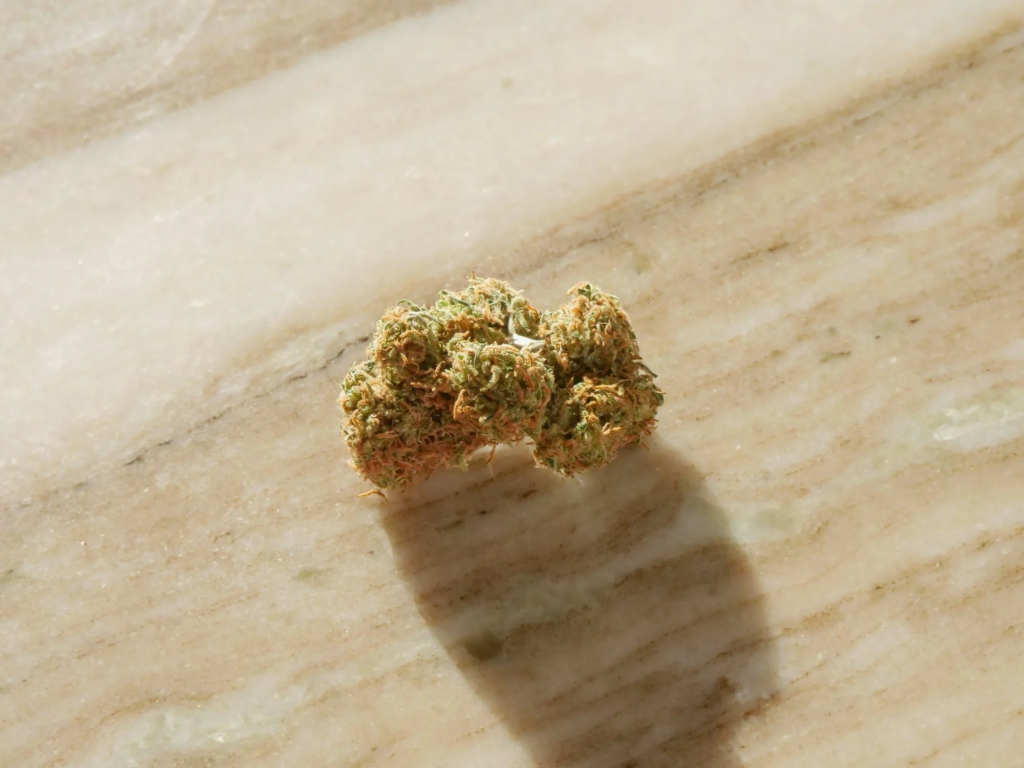
The freshness of weed is essential to ensure its potency and effectiveness. Several factors can affect freshness, including humidity, light, and temperature. Understanding how these factors influence the freshness of weed can help users keep their stash fresh and potent for a longer time.
Proper humidity levels are crucial to keep cannabis flowers fresh. Moldy weed can be a result of too much moisture, while overly dry weed can lead to a loss of potency and flavor. To prevent these issues, it's essential to store weed in an airtight container with controlled humidity levels. Humidity packs can also help maintain the ideal moisture level for your cannabis plants, preserving their quality.
Light exposure is a significant factor that can negatively impact the quality and potency of cannabis flower. When cannabis flowers are exposed to light, the ultraviolet rays in the light can break down the THC molecules, which are responsible for the flower's psychoactive effects. As a result, the potency of the cannabis can decrease significantly.
Therefore, it's crucial to store your cannabis flowers in a dark place, away from direct sunlight. This can help maintain the potency and quality of your cannabis, ensuring you get the desired effects from it. Some effective storage methods include keeping the flower in an airtight container, like a mason jar, in a cool, dry, and dark place.
In addition, homemade edibles can also be affected by light exposure, causing them to lose their potency over time. Therefore, it's important to store cannabis-infused products like edibles in dark conditions to ensure their freshness and potency.
Temperature is another factor that can affect the potency of weed. High temperatures can cause the THC in weed to break down and degrade, leading to a loss of potency. On the other hand, storing weed in a cold environment can also affect its quality, making it dry and brittle. An ideal temperature environment is in a cool, dark place with controlled humidity levels to ensure its freshness and potency over time.
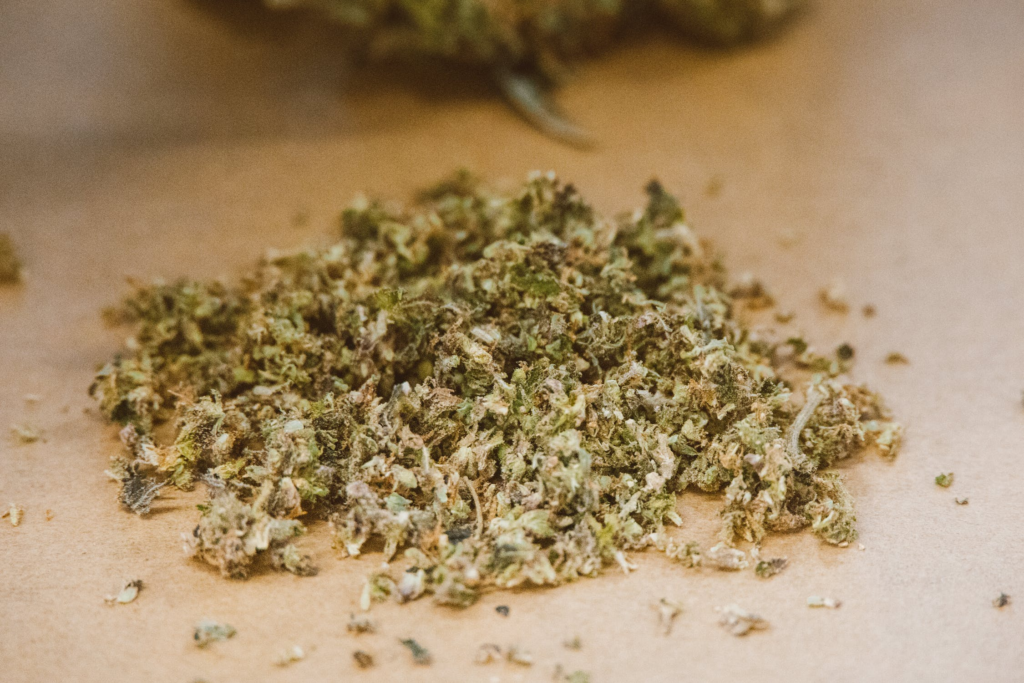
If you are a cannabis user, it is essential to know when your weed has gone stale. There are a few telltale signs that can help you determine the freshness of your cannabis flower. One of the most common indicators is a lack of aroma. Fresh weed has a distinctive aroma that is often earthy, floral, or skunky. However, stale weed may not have any scent, or it may have a musty or moldy odor.
Another sign that your weed has gone stale is a change in its color, texture, or taste. Fresh weed typically has vibrant colors and a sticky, slightly moist texture. In contrast, stale weed may have a dry, brittle texture and appear discolored or disheveled. Moreover, stale weed may taste different than usual or have a reduced flavor profile, indicating a loss of potency.
Aside from changes in aroma, texture, and taste, stale weed may also be harsh on your throat and lungs. Smoking or vaping stale weed can cause discomfort or coughing during use, leading to an unpleasant experience. Therefore, it's crucial to store your weed properly to ensure its freshness and potency.
Using stale weed can have negative effects on both the taste and potency of your cannabis. Stale weed can also be harmful to your health, as it can harbor bacteria and other harmful contaminants. The cannabinoids and terpenes that give cannabis its therapeutic effects can break down over time, resulting in a less effective product.
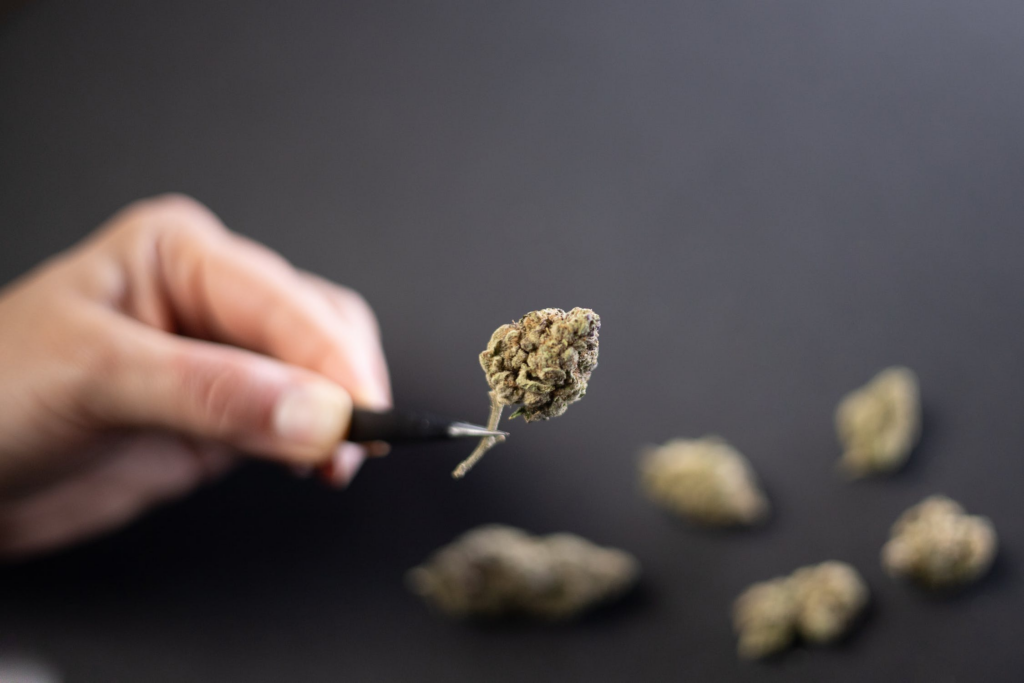
Storing your weed properly is crucial to maintain its freshness and potency. Plastic baggies are not ideal for long-term cannabis storage as they don't provide enough protection from exposure to air, light, and moisture. Instead, use an airtight glass jar or a mason jar to keep your cannabis buds fresh. Check your weed regularly for signs of mold, discoloration, or dark spots. Proper storage and care of your cannabis products can ensure the longevity of your stash, whether it be for homemade edibles or for smoking. And remember, proper cannabis education is essential for every cannabis user to know how to store and maintain their cannabis products properly.
Humidity packs are a popular way to ensure the proper humidity levels are maintained in storage containers. Exposure to light, especially direct light, can also have a negative impact on weed quality, leading to the development of dark spots and discolored areas. Plastic baggies are not ideal for long-term storage of weed as they can allow for exposure to air and fluctuations in temperature, including cold temperatures that can dry out the flower and reduce its shelf life.
To keep your cannabis products fresh, it's important to use proper storage methods. Ground weed can dry out faster than whole buds, so it's best to store it in an airtight glass container. Mason jars are a popular choice, as they can be stored in a dark space to minimize light exposure. Additionally, it's important to regularly inspect your cannabis stash for signs of mold growth or discolored spots, and to remove any bad weed to prevent contamination of the rest of your cannabis.
Different types of edibles also require specific storage conditions. For example, weed gummies should be kept in a cool, dry place, away from direct light and humidity, to maintain their texture and potency. Proper care and storage are major factors in ensuring that your cannabis remains fresh and potent, regardless of the cannabis strain or form it comes in.
In conclusion, understanding the factors that affect the freshness and potency of cannabis is crucial for every cannabis user. Proper storage in an airtight container, away from direct light and with controlled humidity levels, can help preserve the potency and freshness of cannabis flowers and products for an extended period.
By following the tips and tricks mentioned in this blog, cannabis users can ensure they're getting the most out of their stash. Proper cannabis education is also key to maximizing the benefits of this versatile plant.
At DC Collective, we are committed to providing high-quality cannabis products to our customers. If you're in the Los Angeles area, visit our dispensary or check out our online shop for a wide selection of premium cannabis strains, edibles, concentrates, and more. Our knowledgeable budtenders can help you find the right cannabis strain and products that suit your needs.
Chronic pain is a common symptom experienced by millions of people around the world. It can affect daily life and lead to decreased quality of life. However, medical cannabis may offer potential benefits for chronic pain patients. Cananabis-based medicines contain active compounds, such as THC and CBD, that interact with the body's cannabinoid receptors, which may help reduce pain severity and improve other symptoms. In this blog, we will explore the potential benefits of THC and CBD for chronic pain management, the medical conditions that cannabis-derived products may help with, and the adverse effects and legal concerns surrounding their use. We will also discuss the different forms of medicinal cannabis available, the starting dose, and the daily dose of THC and CBD ratio for pain relief.

THC and CBD are both cannabinoids found in cannabis plants, and they have gained a lot of attention for their potential therapeutic benefits, particularly for pain relief. Both compounds interact with the endocannabinoid system (ECS) in the human body, which is responsible for regulating various functions such as pain, inflammation, and immune response.
THC is known for its psychoactive effects, and it has been found to offer pain relief by binding to CB1 receptors in the brain and nervous system. When THC binds to these receptors, it can produce feelings of euphoria or relaxation, which can help alleviate body pain symptoms. This mechanism of action makes THC particularly useful for pain caused by conditions such as neuropathic pain, which can be difficult to manage with traditional pain medications.
CBD, on the other hand, may offer pain relief by interacting with the TRPV1 receptor, which is involved in pain signaling. This receptor plays a crucial role in the perception of pain and inflammation, and when CBD interacts with it, it can help reduce pain and inflammation. CBD has also been found to have anti-inflammatory properties, which can be particularly useful in managing pain caused by conditions such as people with arthritis.
Another important aspect of THC and CBD for pain relief is their different ratios and doses. The right combination of THC and CBD, as well as the right dosage, can have a significant impact on the effectiveness of pain relief. Additionally, the way that THC and CBD are consumed can also have an impact on their pain-relieving properties. For example, smoking or vaporizing cannabis may produce more immediate effects, while ingesting cannabis-based products may produce longer-lasting effects.
It's important to note that while THC and CBD have shown promise for pain relief, more research is needed to fully understand their mechanisms of action and potential benefits. Additionally, cannabis-based medicines may not be suitable for everyone and may have adverse effects, particularly when used in high doses or with other medications such as blood thinners.
Overall, the potential benefits of THC and CBD for chronic pain management are promising, and many medical professionals see them as a potential alternative to opioids. However, it's important to consult with a healthcare provider before using cannabis-based products for body pain relief and to carefully consider the potential benefits and risks.

Cannabidiol (CBD) has been gaining attention in recent years for its potential therapeutic effects on various health conditions, including chronic pain. Several studies have suggested that CBD may help reduce pain and inflammation by interacting with the body's endocannabinoid system and other receptors, such as the serotonin and vanilloid receptors.
One study published in the European Journal of Pain found that CBD applied topically to the skin could help reduce pain and inflammation associated with arthritis. Another study published in the Journal of Experimental Medicine suggested that CBD may help reduce chronic pain and neuropathic pain by targeting the alpha-3 glycine receptors.
CBD may also be effective in managing symptoms of multiple sclerosis and fibromyalgia, which are two conditions that are known to cause chronic pain. In a study published in the Journal of Clinical Pharmacy and Therapeutics, researchers found that CBD reduced pain and spasticity in people with multiple sclerosis. In another study published in the Journal of Pain Research, researchers found that CBD may improve the quality of life in people with fibromyalgia.
While these studies provide promising results, more research is needed to fully understand the potential therapeutic effects of CBD on chronic pain and related conditions. It's also important to note that CBD may interact with certain medications, such as blood thinners, and should be used with caution. As always, it's best to consult with a healthcare professional before using CBD or other cannabis-based medicines for chronic pain management.

CBD has emerged as a potential alternative treatment for chronic pain, particularly in cases where conventional pain management methods are ineffective or have adverse side effects. Studies have shown that CBD may help reduce pain and inflammation by interacting with various receptors in the body, including the endocannabinoid system, which is involved in regulating pain and inflammation.
Research has also shown that CBD may be effective in managing pain associated with conditions such as multiple sclerosis and fibromyalgia. For instance, a study published in the Journal of Clinical Pharmacy and Therapeutics found that CBD, when combined with THC, could significantly reduce pain intensity and improve sleep quality in patients with multiple sclerosis. Similarly, a review of existing literature found that CBD may be beneficial in managing pain and improving quality of life in patients with fibromyalgia.
Overall, while more research is needed to fully understand the therapeutic potential of CBD for chronic pain, the existing evidence suggests that it may be a promising option for those seeking alternative forms of pain management.

When it comes to choosing between THC and CBD for pain relief, it's important to consider your individual preferences and needs. Both compounds interact with the endocannabinoid system in the body, which can help regulate pain and inflammation. However, THC is known for its psychoactive effects, which can cause altered perception and mood changes, making it less tolerable for some individuals. On the other hand, CBD is non-intoxicating and may be more suitable for individuals who want to avoid psychoactive effects or who have conditions that cause inflammation.
It's also important to note that THC may be more effective for certain types of pain, such as nerve pain. In a clinical study, patients with neuropathic pain who used cannabis-based medicines containing THC experienced significant improvement in pain severity compared to those who used a placebo. However, the study also reported adverse effects, such as dizziness and drowsiness.
CBD, on the other hand, has been studied for its potential therapeutic effects on various pain conditions, including multiple sclerosis and fibromyalgia. Some human studies have reported moderate improvements in pain symptoms with the use of CBD oil for pain management. Additionally, CBD has been investigated as an alternative to opioids for chronic pain management, with some research suggesting that it may have fewer adverse effects and lower risk of addiction compared to opioids.
Ultimately, the choice between THC and CBD for pain relief should be made in consultation with a healthcare professional, taking into account the potential beneficial effects and adverse effects of each compound, as well as any legal concerns and individual medical conditions.
Both THC and CBD may cause side effects, such as dry mouth, dizziness, and changes in appetite. THC may also cause psychoactive effects, such as altered perception and mood changes. It's important to consult with a healthcare provider before using cannabis products for pain relief. Additionally, the legality of cannabis products may vary depending on the state or country.

When it comes to choosing a THC or CBD product for pain relief, it's important to consider your individual needs and preferences. There are a wide variety of products available, each with their own unique benefits and drawbacks. For example, THC may be more effective for certain types of pain, such as nerve pain, but it can also cause psychoactive effects that some individuals may not tolerate. On the other hand, CBD may be more suitable for individuals who want to avoid psychoactive effects or who have conditions that cause inflammation.
It's also important to consider the form of the product. Tinctures, topicals, and edibles are just a few of the many options available. Topical CBD products may be more suitable for localized pain, while edibles may be more convenient for individuals who want a long-lasting effect.
Ultimately, the choice of THC or CBD product will depend on your specific needs and preferences. It's always a good idea to consult with a healthcare provider to determine the best course of action for managing your chronic pain.
In conclusion, the potential therapeutic effects of THC and CBD for chronic pain have been extensively studied and show promise in providing relief for individuals suffering from this debilitating condition. However, it's crucial to approach the use of cannabis products with caution and responsibility. It's essential to consult with a healthcare provider before trying any cannabis product, and choosing the right product that suits your needs and preferences is also important.
Furthermore, it's important to be mindful of the potential side effects associated with the use of medical cannabis products, such as drowsiness, dry mouth, and impaired cognitive function. It's also crucial to be aware of the legal status of cannabis products in your region and ensure that you are purchasing products from reputable sources.
If you're interested in exploring the potential benefits of cannabis products for pain relief, we encourage you to visit DC Collective, a trusted and reputable dispensary that offers a wide range of high-quality cannabis products. Their knowledgeable staff can help guide you in selecting the right product to suit your needs and answer any questions you may have. Take the first step towards finding relief today by visiting DC Collective.
Bongs are a popular smoking accessory because they can provide a smoother smoking experience compared to other methods. When using a bong, smoke is filtered through water, which can help cool it down and remove some of the harshness. Additionally, the smoke may pass through percolators or diffusers, which further break it up and make it easier to inhale. Using a bong can also help conserve your herbs or tobacco, as you can take bigger hits with less effort.

Bongs are a popular method of smoking due to their ability to provide a smooth, cool hit that is easy on the lungs. There are numerous types of bongs to choose from, each with its own distinct advantages. Glass bongs, for example, offer a clear view of the smoke and are easy to clean. On the other hand, acrylic and silicone bongs are more durable and resistant to breaking, making them a great option for those who are constantly on-the-go.
When selecting a bong, it is important to keep in mind factors such as size, material, and price. Consider the environment in which you plan to use your bong and choose a material that is appropriate for your lifestyle. Additionally, the size of the bong may affect the smoothness of the hit, so make sure to select a size that fits your preferences. Lastly, keep your budget in mind and choose a bong that fits your price range. By taking these factors into consideration, you can find a bong that is perfect for your needs and preferences.
Before you start smoking, it's important to properly set up your bong. Start by filling it with hot water (or warm water, depending on your preference). Then, add in coarse salt and shake it to help loosen any resin buildup. Rinse the bong pieces with clean water and assemble them. Fill the bong bowl with your preferred herbs or tobacco and light it. Remember to inhale slowly and deeply, and exhale smoothly.

When smoking with a bong, it's important to inhale and exhale properly to get the most out of your smoke session. Start by inhaling slowly and deeply, filling your lungs with smoke. Hold it in for a few seconds before exhaling smoothly. Repeat as desired. Remember to take breaks and hydrate between hits to avoid getting too high.
Cleaning your bong regularly is crucial to keep it functioning properly and avoid any unpleasant smells or tastes that can ruin your smoking experience. If you have a glass bong, you can start by rinsing the bong pieces with hot water to remove any loose debris. For plastic or acrylic bongs, warm water can be used instead to avoid damaging the material.
Once the bong pieces are rinsed, you can add coarse salt and rubbing alcohol to the bong, filling it about halfway. Shake the bong vigorously to help loosen any resin build-up. You can also use a brush or pipe cleaner to scrub away any stubborn stains. Let the bong sit for a few minutes, then pour out the dirty bong water and rinse everything with clean water.
Don't forget to clean your bong bowl and downstem as well, as these pieces can become clogged with resin over time. You can soak them in rubbing alcohol and salt, or use a pipe cleaner to remove any debris. Once everything is clean, let it air dry before using it again. By keeping your bong clean, you can enjoy a smooth, flavorful smoking experience every time.

While using a bong can be a fun and enjoyable experience, it's important to use it safely and responsibly. Always use fresh water and avoid using dirty water or dirty bong pieces. Make sure to only smoke in a well-ventilated area and avoid sharing your bong with others to prevent the spread of germs. Remember to stay hydrated and take breaks as needed.
In conclusion, smoking with a bong can be a fun and enjoyable experience, but it's important to use it safely and maintain it properly. By choosing the right bong, setting it up correctly, smoking with proper technique, and cleaning it regularly, you can ensure a smooth and pleasant smoke session every time.
If you're in the Los Angeles area and looking for high-quality bongs or smoking accessories, visit DC Collective in Van Nuys. Our knowledgeable staff can help you find the perfect product to suit your needs and preferences. And if you're new to smoking, we can provide you with tips and advice on how to get started.
Remember to always smoke responsibly and in accordance with local laws and regulations. We hope this guide has been helpful in teaching you how to properly set up, smoke, and clean your bong. Happy smoking!
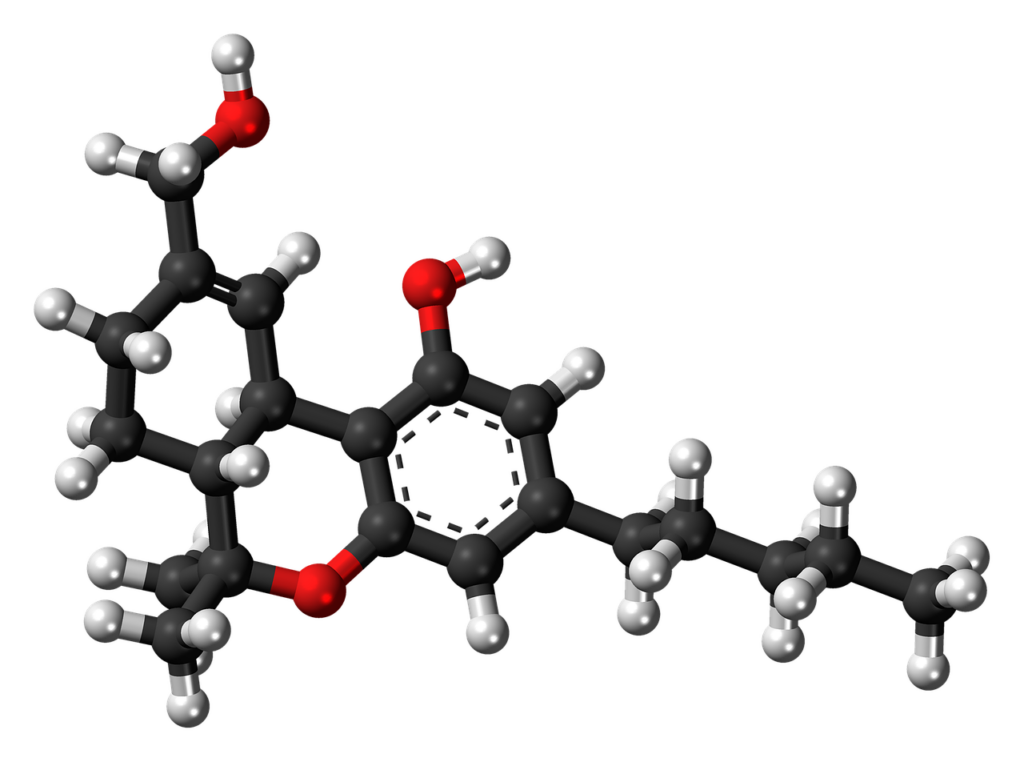
THC, also known as tetrahydrocannabinol, is the most well-known and most abundant psychoactive compound found in the cannabis plant. THC is responsible for producing the euphoric and psychoactive effects commonly associated with marijuana use. Its chemical structure is similar to the endocannabinoids produced naturally by the human body, which are involved in regulating a variety of physiological processes.
Since its discovery in the 1960s, THC has been the subject of extensive research, particularly in the areas of medicinal and therapeutic use. It has been found to have a wide range of potential medical applications, including pain relief, nausea and vomiting reduction, appetite stimulation, and reduction of muscle spasms in patients with multiple sclerosis.
THC is just one of many cannabinoids found in the cannabis plant that can have a range of effects on the body and mind. While it can offer therapeutic benefits for those with chronic pain and certain medical conditions, it can also have adverse health effects, particularly when used in excess or by those who are sensitive to its effects.
The legal status of THC-containing products varies greatly by jurisdiction. While some countries and states have legalized both medical and recreational use of marijuana, others have strict laws prohibiting its use or only allow it for medical purposes with a prescription. It is important to research and understand the laws in your area before using any THC-containing products.
Read on to learn about what exactly THC is as well as the different types that exist and their individual benefits.
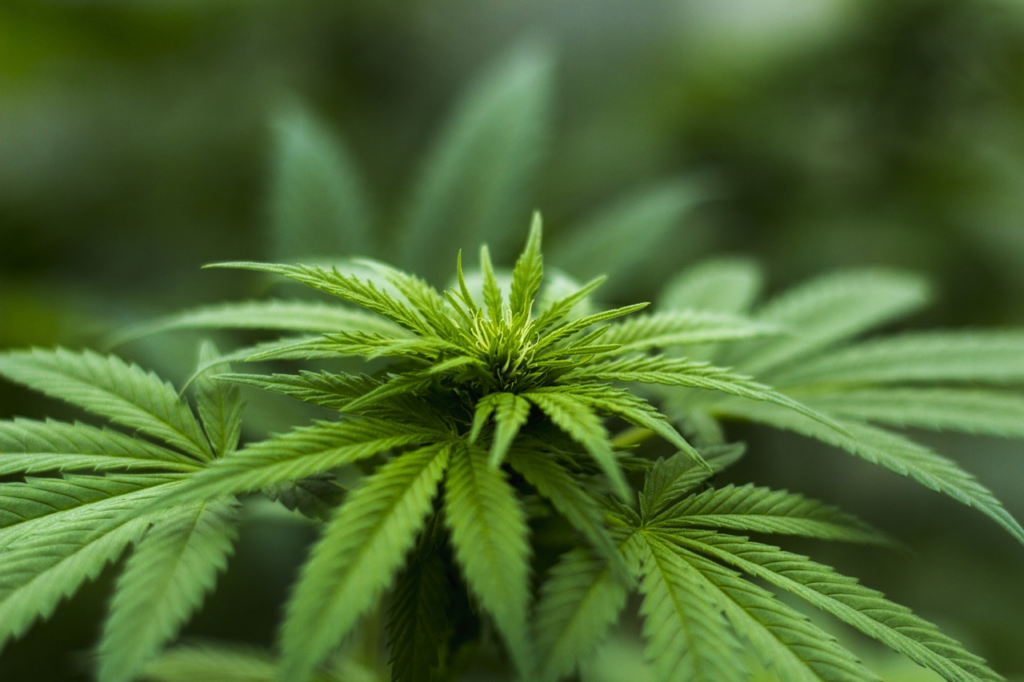
The cannabis plant is known for containing a diverse array of chemical compounds, including cannabinoids. These compounds interact with the body's endocannabinoid system, producing various physiological effects. THC is one such cannabinoid, and it has been the subject of extensive research due to its psychoactive properties.
People often consume THC through smoking or vaporizing cannabis, as well as ingesting cannabis-infused products like edibles or tinctures. The effects of THC on the body can vary depending on several factors, including the method of consumption, dosage, and individual tolerance.
It is important to note that while THC can offer therapeutic benefits, it can also pose risks, particularly when used in excess or by individuals who are sensitive to its effects. As such, the legal status of THC-containing products varies by jurisdiction, with some areas legalizing both medical and recreational use, while others maintain strict prohibitions.

The effects of cannabis can vary widely depending on factors such as dosage, method of consumption, and individual tolerance. It is important to be aware of the potential adverse events related to THC use, particularly in cases of cannabis use disorder or when consumed in excess.
Medical cannabis laws in some jurisdictions allow for the use of cannabis-derived products containing THC to treat conditions such as neuropathic pain and abdominal pain. However, it is important for healthcare providers to be aware of the potential adverse effects of THC and to monitor their patients accordingly.
However, it is important to note that excessive use or misuse of THC can lead to negative outcomes. Those with cannabis use disorder or those who consume THC in excess are more likely to experience adverse events such as anxiety, paranoia, hallucinations, and impaired cognitive function. Therefore, responsible use and adherence to recommended dosages are critical to avoid any potential negative consequences.
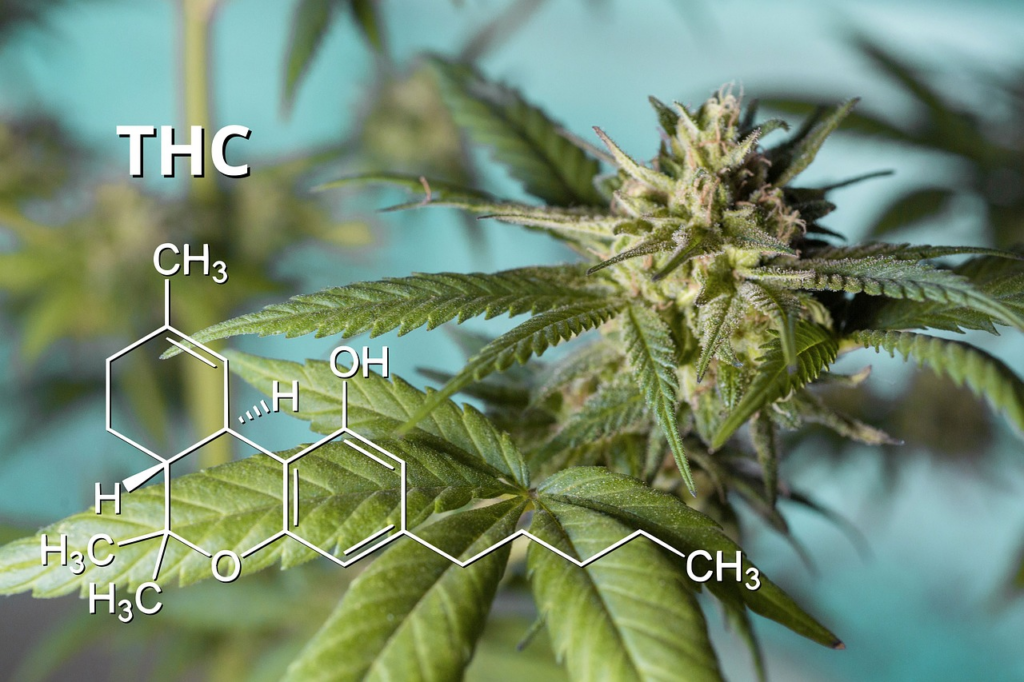
If you're new to the world of cannabis, it can be overwhelming to understand the different types of THC available. THC, or tetrahydrocannabinol, is the primary psychoactive compound found in cannabis plants that produces the "high" associated with marijuana use. But did you know that there are several different types of THC?
Delta-9 THC is the most talked-about variation of THC found in cannabis plants. It is abundant in both male and female plants, but more concentrated in the latter. This psychoactive compound binds with CB1 receptors in the brain and nervous system, resulting in altered mental and physical states such as disassociation from time, impaired memory, and relaxation of the body.
Despite its psychoactive properties, Delta-9 THC is being researched for its potential therapeutic benefits. Some of these health benefits include its ability to promote sleep, alleviate mood swings, reduce discomfort, and alleviate nausea or vomiting. Delta-9 THC is also known to stimulate appetite, making it helpful for those dealing with low appetite.
Delta-8 THC, a less abundant form of THC found in the cannabis plant, is gaining popularity in the cannabis industry. This compound is a double bond isomer of Delta-9 THC, which means that they have the same elements and atoms, but are structurally distinct. Delta-8 THC forms when Delta-9 THC ages and is exposed to oxidation.
Although Delta-8 THC is believed to produce a more clear-headed and energetic effect compared to Delta-9 THC, it is still considered to have similar psychoactive effects. Delta-8 THC interacts with the CB1 and CB2 cannabinoid receptors in the body and has been shown to have several potential benefits, such as pain relief and anxiety reduction.
However, due to its low concentration in the cannabis plant, most commercially available Delta-8 products are made by converting Delta-9 THC or cannabidiol (CBD) chemically. As a result, there are limited studies on the effects and safety of Delta-8 THC products. It is important to note that although Delta-8 THC is federally legal, the sale of Delta-8 products is not regulated by the FDA, which may pose a risk for consumers.
Delta-10 THC is a lesser-known cannabinoid that shares similar chemical properties as THC but is arranged differently, resulting in distinct effects. Unlike delta-9 THC, delta-10 THC occurs in extremely low amounts in the cannabis plant, making it difficult to consume high doses directly. Due to its rarity, most delta-10 products are synthetically developed in labs.
Delta-10 THC is classified as a minor cannabinoid, similar to delta-8 THC, and researchers have conducted little research on its effects on the body. As a result, the potential benefits and adverse effects of consuming delta-10 THC are still largely unknown. Further research is necessary to fully understand the potential of delta-10 THC as a therapeutic compound.
THCA is a type of THC that does not produce any mind-altering effects and is usually found in the stems, leaves, and flowers of the cannabis plant. Unlike other forms of THC, THCA's structure is not suited for CB1 receptors in the nervous system, which are responsible for psychoactive effects.
However, THCA can be transformed into other types of THC, such as THCV, Delta-8 THC, and Delta-9 THC, through a process that involves applying heat. This transforms the chemical composition of THCA molecules and makes them suitable to fit into the CB1 receptors in the body, producing therapeutic benefits.
Studies suggest that THCA may help alleviate conditions such as nausea and loss of appetite, epilepsy, arthritis, and inflammation in muscles, and diabetes. While more research is needed to fully understand THCA's therapeutic potential, it is a promising area of study in the cannabis industry.
THCV is a lesser-known type of THC that is produced through the breakdown of THCA during the process of decarboxylation, which occurs when medical marijuana is dried and vaporized. Although it is not well-known, it is gaining popularity for its positive effects.
Research suggests that THCV has a shorter chain of molecules and lower interaction with receptors, meaning that it does not produce mind-altering effects in low doses. However, higher doses can produce a clear and stimulating high. THCV interacts with the CB1 receptors in the body, but the effects are short-lived compared to other THC types. Unlike other types of THC, THCV is an appetite suppressant and does not stimulate the appetite.
Studies show that THCV may offer benefits such as regulating blood sugar and insulin resistance, neurological therapeutics for epilepsy and Alzheimer's, promoting bone development and growth, and reducing chronic pain and inflammation.
THCP, or tetrahydrocannabiphorol, is a newly discovered cannabinoid that has garnered attention due to its unique properties. It is believed to have 33 times the binding affinity for CB1 receptors as delta-9 THC, resulting in a more intense and euphoric effect.
The length of the side chains in a compound determines its ability to bind with receptors, and THCP has a seven-link side chain, which is the longest of any naturally occurring cannabis compound. This makes THCP structurally similar to delta-9 THC, but with a different arrangement of elements.
Currently, THCP exists in a legal grey area, much like delta-8 and delta-10 THC. There is a need for further research to fully understand the potential benefits of this compound.
THC-O acetate, also known as THC-O, is a synthetic cannabinoid derived from hemp. One of its primary advantages is that it is created from federally legal hemp, in contrast to THC, which is only legal in some states. However, the production of THC-O-acetate involves using a highly flammable chemical called acetic anhydride. Like THCP and Delta-10 THC, THC-O is one of the least studied THC analogs, so its potential advantages and side effects have yet to be discovered.

The sale of cannabis and access to cannabis-based products, including cannabinoid products, cannabis oil, and cannabis accessories, are subject to various regulations and restrictions. It is important to understand the definition of marijuana in your jurisdiction and to comply with all applicable laws and regulations.
The National Institute on Drug Abuse has compiled a list of medical conditions for which cannabis-based products, including those containing THC, may be helpful. However, it is important to consult with a healthcare provider before using these products and to be aware of the potential adverse effects.
In conclusion, choosing the right THC product requires careful consideration of several factors, including personal preference, tolerance, and intended use. With the vast array of products available, it can be overwhelming to make a decision. However, taking the time to research and ask for recommendations can make the process easier and ensure a more enjoyable experience.
DC Collective is one example of a reputable dispensary that offers a wide selection of THC products and knowledgeable staff to assist customers in selecting the right product for their needs. By following the tips outlined in this guide and seeking guidance from experts, consumers can make informed decisions and have a positive experience with THC products.

⚠️WARNING: Products sold on this site can expose you to chemicals including marijuana smoke, which are known to the State of California to cause cancer. For more information, go to http://www.P65Warnings.ca.gov
License #C12-0000022-LIC HOURS OF OPERATION: Mon-Thu 7am – 9pm
Fri-Sat 7am – 10pm
Sun 9am – 8pm